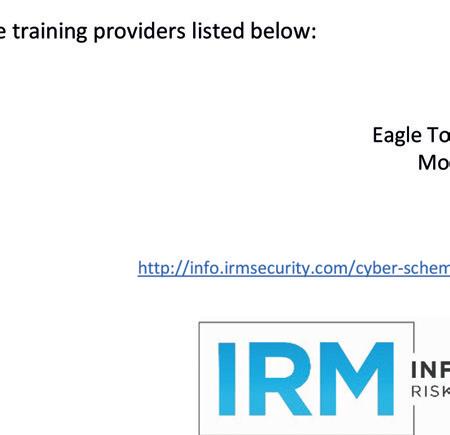ForensicS


































Forensics Europe Expo
















DFM Forensics Conference
Agenda and Speakers Information INSIDE!
Brian Cusack explains the challenges of the digital manipulation of reality







As many of you know, I have been busy and involved in the development of the UK’s new Cyber Security Council, with an aim of making sure that Digital Forensics, amongst other aspects, are catered for in the future council.
The status of this work is that the UK Government has released its Grant Funding Tender and an alliance of organisations is working diligently to respond to the tender.
In order to make sure that Digital Forensics was well represented, I started looking for someone who could act as a focal point, and as a result I was asked, "In an ideal world give me a very brief picture of the type of person required”. This set me to thinking, and the main elements of my response were as follows.
At the strategic level, I believe that the person needs to understand more than just the processes for Black Box Digital Forensics, and needs to understand the direction of travel for the wider digital and computational technology that is being deployed in SMART Cities, Connected and Autonomous Vehicles (SMART Transport including Maritime), Manufacturing, the Built Environment, the Internet and Industrial Internet of Things (IIoT) etc.


At present, many practitioners only tend to look at a number of aspects of the wider digital world, and I am guessing that this is based on the current requirements requested by Law Enforcement and other investigative agencies who probably are not aware of what other artefacts may exist. Like the more traditional Wet Forensics, there are possibly many more sub-disciplines that need to be catered for, including the technology that is starting to underpin the Wet Forensics analysis.There is also the understanding of what being Digitally Forensically Ready actually means, based on the context in which it is being considered.
There is also a link to Intelligence Gathering and Malware Analysis carried out as part of the operational Cyber Security activities, but when an event has occurred it is the Digital Investigator that has to make sense of all the data in a forensically sound manner. This is why the Standards for Labs are okay for now, but may need to be expanded to cover other areas as experience in wider digital forensics investigations continues to grow.
All of this change will facilitate the need for a review of the skills required for a Digital Investigator and it may well transpire that more than one type of digital investigator will be required at various skill levels all the way up to a Chartered Digital Forensics Practitioner who would take charge of a large investigation.

Enjoy this quarter’s selection of articles in this issue and, as ever, your comments and thoughts are welcome, just send them to 360@digitalforensicsmagazine.com
Roy Isbell
Digital Forensics Magazine is a quarterly magazine, published by TR Media Ltd, registered in the UK. It can be viewed online at: www.digitalforensicsmagazine.com
Editorial Board
Roy Isbell, Alastair Clement, Scott Zimmerman, Angus Marshall & Tim Watson
Acquisitions
Roy Isbell, Prof. Tim Watson & Scott Zimmerman
Editorial Roy Isbell
News Desk Matthew Isbell
Sales & Marketing
Safia Halaq
Production and Design
Matt Dettmar www.freelancemagazinedesign.co.uk
Contributing Authors
John Buckleton, Brian Cusack, Nihad Hassan, Tyler Hatch, Alberto Daniel Hill, Angus Marshall, Bernard Parsons & Scott Zimmerman
Technical Reviewers
Prof. Tim Watson, Scott Zimmerman, Roy Isbell & Angus Marshall
Contact
Editorial
Contributions to the magazine are always welcome; if you are interested in writing for Digital Forensics Magazine or would like to be on our technical review panel, please email us: editorial@digitalforensicsmagazine.com
Alternatively, you could telephone us on: +44 (0) 844 5 717 318
News
If you have an interesting news items that you’d like us to cover, please contact us on: news@digitalforensicsmagazine.com
Advertising
If you are interested in advertising in Digital Forensics Magazine or would like a copy of our media kit, contact the marketing team on: marketing@digitalforensicsmagazine.com
Subscriptions
For all subscription enquiries, please visit our website at www.digitalforensicsmagazines.com and click on subscriptions.
For institutional subscriptions please contact our marketing department on marketing@digitalforensicsmagazine.com
Feedback
Feedback or letters to the editor should be sent to 360@digitalforensicsmagazine.com
Copyright and Trademarks

Trademarked names may appear in this magazine. Rather than use a trademark symbol with every occurrence of a trademarked name, we use the names only in an editorial fashion and to the benefit of the trademark owner, with no intention of infringement of the trademark.
Digital Edition Provider
Digital Forensics Magazine uses ZMags for its Digital Editions, allowing the creation of carbon neutral publications.







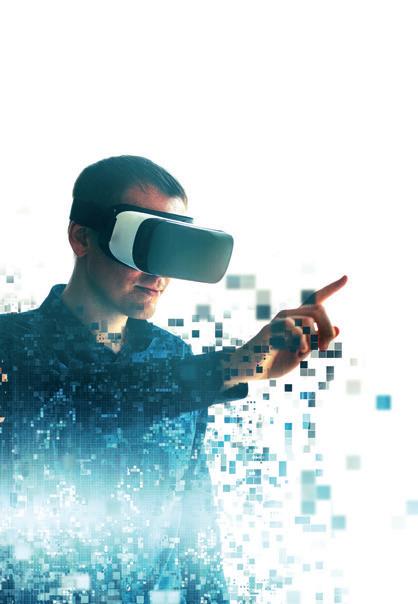






The malware has been operating since 2016 and Sophos has tracked 96 samples in the wild. Like previous targeted ransomware, including BitPaymer, Dharma and SamSam, the attackers who are infecting computers with Matrix have been breaking in to enterprise networks and infecting those computers over Remote Desktop Protocol (RDP), a built-in remote access tool for Windows computers. However, unlike these other ransomware families, Matrix only targets a single machine on the network, rather than spreading widely through an organization.
In its latest paper, SophosLabs reverse engineered the evolving code and techniques employed by the attackers, as well as the methods and ransom notes used to attempt to extract money from victims. The Matrix criminals evolved their attack parameters over time, with new files and scripts added to deploy different tasks and payloads onto the network.

Matrix ransom notes are embedded in the attack code, but victims don’t know how much they must pay until they contact the attackers. For most of Matrix’s existence, the authors used a cryptographically-protected anonymous instant messaging service, called bitmsg.me, but that service has now been discontinued and the authors have reverted to using normal email accounts. The threat actors behind Matrix make their demand for cryptocurrency ransom in the form of a U.S. dollar value equivalent. This is unusual as demands for cryptocurrency normally come as a specific value in cryptocurrency, not the dollar equivalent. It’s unclear whether the ransom demand is a deliberate attempt at
misdirection, or just an attempt to surf wildly fluctuating cryptocurrency exchange rates. Based on the communications SophosLabs had with the attackers, ransom demands were for US$2,500, but the attackers eventually reduced the ransom when researchers stopped responding to demands.
Matrix is very much the Swiss Army Knife of the ransomware world, with newer variants able to scan and find potential computer victims once inserted into the network. While sample volumes are small, that doesn’t make it any less dangerous; Matrix is evolving, and newer versions are appearing as the attacker are improving on lessons learned from each attack.



In Sophos’ 2019 Threat Report it was highlighted that targeted ransomware will be driving hacker behaviour, and organizations need to remain vigilant and work to ensure they are not an easy target. It recommends implementing the following four security measures immediately:
• Restrict access to remote control applications such as Remote Desktop (RDP) and VNC
• Complete, regular vulnerability scans and penetration tests across the network; if you haven’t followed through on recent pen-testing reports, do it now. If you don’t heed the advice of your pentesters, the cybercriminals will win
• Multi-factor authentication for sensitive internal systems, even for employees on the LAN or VPN
• Create back-ups that are offline and offsite, and develop a disaster recovery plan that covers the restoration of data and systems for whole organizations, all at once
In the case of this malicious MS Word document, victims who open the document are prompted with a security warning that macros have been disable. If the user then clicks on “enable content,” the NanoCore remote access Trojan (RAT) software is installed on the victim’s Windows system. Egress Software’s CTO, Neil Larkins comments:
“This latest strain of NanoCore RAT (1.2.2.0) is known to execute a series of malicious behaviours, including password stealing and keylogging, and makes it difficult for victims to eradicate by injecting code that preserves the malware in the infected system’s memory. As reports show, this strain is currently being transmitted via an infected Word document attached to phishing campaigns – so it is imperative people are on the lookout for this attachment and therefore, as much as possible, avoid downloading the malware in the first place.
Sophisticated phishing emails are designed to look as real as possible, and can, to the untrained eye, appear nearly identical to an email from a trusted sender or real person, particularly if an email account has been compromised or spoofed. On top of this, the malicious Word document used to transmit NanoCore RAT 1.2.2.0 leverages people’s repeat behaviour of clicking to enable Microsoft macros within Office documents. As a first step, users should always think twice before opening attachments from unknown senders – particularly if they have a suspicious-looking or unfamiliar file name (like
’eml_-_PO20180921.doc’). Often, cyber-criminals take a scattergun approach to sending phishing emails, targeting a large audience with the aim of being successful with a proportion of recipients. As a result, even though the email may look and sound realistic, it’s likely the recipient hasn’t heard of or worked with the sender before –which should raise an immediate red flag. Users should always be encouraged to raise these incidents with their internal security team and, on personal devices, can rely on the research of organisations like Fortinet to steer them in the right direction as well.



Although it’s concerning to see another strain of NanoCore RAT emerge, despite its creator already being sentenced to serve almost three years in federal prison, new technologies are also evolving to help tackle new threat – and organisations should be on the lookout to use these wherever possible. The application of machine learning, deep learning and NLP has made it increasingly possible to mitigate this risk. By analysing various attributes, including the sender’s authenticity, smart technology can now recognise patterns and highlight anomalies – including whether or not the sender of an email can be trusted.”
GCHQ has created a competition in codebreaking for girls aged 12 to 13, in a bid to create the next generation of female cybersecurity professionals. Because of the shortage of cybersecurity professionals today, it is more critical than ever for historically underrepresented demographics to help fill the need. There will be up to 3.5 million job openings by 2021 but in the meantime, women make up only 20% of the cybersecurity workforce. While that is up from a mere 11% in 2013, there is still a lot of opportunity to be seized in cybersecurity careers. What’s more, the UK needs people with disparate backgrounds because the people cybersecurity vendors are pursuing, (threat actors, hackers, ‘bad guys’) also have a wide variety of backgrounds and experiences. The wider variety of people and experience the UK has defending networks nationwide, the better our chances of success.
Thales eSecurity’s global CISO, Bridget Kenyon, comment: “It is great to see GCHQ launch its CyberFirst Girls Competition, which specifically targets girls aged 12 to 13. I’d like to see more of these initiatives targeted at harnessing the interest of female students in STEM subjects and nurturing it to create cybersecurity practitioners for our future.
“Though the number of women in our industry is rising, women still represent only 20 percent of the overall cyber security community. Given the waves of data breaches hitting British organisations throughout 2018, and the ongoing skills shortage, it’s vital that we work to make cyber security an exciting and accessible career choice for all.” •


House of Lords Science and Technology Select Committee
House of Lords Science and Technology Select Committee will question representatives from the Home Office, including Rt. Hon Nick Hurd MP, and Lucy Frazer QC MP from the Ministry of Justice on the UK’s use of forensic science in criminal investigations. The Committee has heard concerning evidence that there are differing levels of scientific understanding within the Criminal Justice System by lawyers, judges and jurors on the use of forensic evidence but also a lack of progress in ensuring the UK is equipped with the highest possible standards of forensic science. The Committee will ask for updates on what their Departments are doing to ensure the quality of forensic science is effective across all areas of the criminal justice system and will quiz Ministers on their plans to stabilise the forensic science market Questions likely to be asked during the sessions include:
• Has the introduction of mandatory training in scientific principles such as probability for legal professionals been considered?
• Has the market model of provision of forensic services destabilised effective provision of forensic science to the Criminal Justice System?
• What guidance has been provided to judges about the timescales needed to analyse digital evidence?
• Why has no progress been made on providing the Forensic Science Regulator with statutory powers?
• What are you doing to work with UKRI to provide adequate and strategic support for research and development into forensic science?
Often, cybercriminals take a scattergun approach to sending phishing emails, targeting a large audience.
Nihad Hassan provides us with an overview to intelligence collection using social media sites.
In a previous article (Issue 37 of this publication), we’ve introduced the term Open Source Intelligence (OSINT) and discussed how it may be used to support intelligence requirements. OSINT refers to all the information that is publicly available, many estimates show that 90 percent of useful information acquired by intelligence services comes from public sources (in other words, OSINT sources). OSINT sources are distinguished from other forms of intelligence because they must be legally accessible by the public without breaching any copyright, patents or privacy laws. That’s why they are considered “publicly available.”

Social media sites open up numerous opportunities for online investigations because of the vast amount of useful information located in one place. For example, you can get a great deal of personal information about any person worldwide by just checking their Facebook page. Such information often includes the person of interest’s connections on Facebook, political views, religion, ethnicity, country of origin, personal images and videos, spouse name (or marital status), home and work addresses, frequently visited locations, social activities (e.g., Sports, theatre, and restaurant visits), work history, education, important event dates (such as birth date, graduation date, relationship date, or the date when left/start a new job), and social interactions. This may all be contained in one Facebook profile.
Social media intelligence (SOCMINT) is a sub-branch of Open Source Intelligence (OSINT), it refers to the information gathered exclusively from social media platforms. The resources available on social media sites may be either open to the public or private. Private information should not be accessed without proper permission (e.g., Facebook private messages or posts shared with friends). Information available on social media sites may be categorized into two groups:
1. The original content itself – such as a Facebook post or image/video.
2. The metadata associated with this content –such as image EXIF metadata, the date/time and geo-location info of the posted content.
In this article, we will introduce you to the SOCMINT term and demonstrate how we may use a plethora of tools, online services and other techniques to gather intelligence from social media sites.
People interact with social media sites for different purposes. The following are the general interactions used across various social media sites:
1. Post/comment: People access social sites to post or write paragraphs of text that may be seen by other users. Such posts may also include user’s geographical info (In Facebook, they call this feature, a “Check in”).
2. Reply: This is a text message (may also be an image, video, or URL) that replies to another user’s post, update status, or comment.
3. Multimedia content (images and videos): Multimedia is popular; a user may upload a video or image as a part of their post. Many social platforms allow their users to upload multiple images/videos to form an album. Live streams also are available on many social platforms such as Facebook and YouTube. This feature allows a user to broadcast live videos and display the recording on their profiles for later viewing.
4. Social interactions: This is the essence of social media sites, where people get connected online by sending/responding to another user’s request.
5. Metadata: The results from the sum of user interactions with the social platform. Examples include the date and time when a video/image was uploaded, the date and time when a friend request was accepted, geolocation data, if enabled, of the uploaded multimedia file or post, and the type of device used to upload the contents (mobile or a standard computer).
SOCMINT is interested in gathering all these content types, however the ability to do this depends on the privacy control level set by each user when publishing posts/updates online. For example, it is not possible to see other people’s updates on Facebook if they restrict a post’s visibility to some friend circles or set it to “Only me.”
Many people use the terms social media and social networking interchangeably to refer to Facebook, Twitter, LinkedIn, and related social platforms. This is not absolutely wrong, but it is not accurate because social media is the main umbrella that contains other categories like “social networking” that includes sites like Facebook. The following are the main social media types classified according to function:
1. Social networking: This allows people to connect with other people and businesses (brands) online to share information and ideas. Examples include Facebook and LinkedIn.
2. Photo sharing: Such websites are dedicated to sharing photos between users online. Examples include: Instagram & Flicker.
3. Video sharing: Such websites are dedicated to sharing videos, including live video broadcasts. The most popular one is YouTube. Please note that Facebook and Twitter also offer live video broadcast service.
4. Blogs: This is a type of the informational website containing a set of posts—belonging to one topic or subject—organized in descending order according to the publish date. The most popular blogging platforms are WordPress (wordpress.com) and Blogger (www.blogger. com), which is powered by Google.
5. Microblog: This allows users to publish a short text paragraph (which can be associated with an image or video) or a link (URL) to be shared with other audience online. Twitter is the most popular example.
6. Forums (message boards): This are one of the oldest types of social media. Users exchange ideas and discussions in a form of posted messages and replies. Reddit is an example.
7. Social gaming: This refers to playing games online with other players in different locations. It has gained more popularity recently.
8. Social bookmarking: These websites offer a similar function to your web browser’s typical bookmark. However, they allow you to do this online and share your Internet bookmarks among your friends in addition to adding annotations and tags to your saved bookmarks. Example include: Atavi (atavi.com) and Pinterest (www.pinterest.com).
9. Product/service review: These websites allow their users to review, give feedback, about any product or service they have used. Yelp (www.yelp.com) and Angie’s List (www.angieslistbusinesscenter.com) are examples of this type.
Now, it’s time to begin discuss how to use different tools and techniques to acquire intelligence and information from these platforms, we will limit our discussion to the most two popular social media sites which are: Facebook and Twitter.
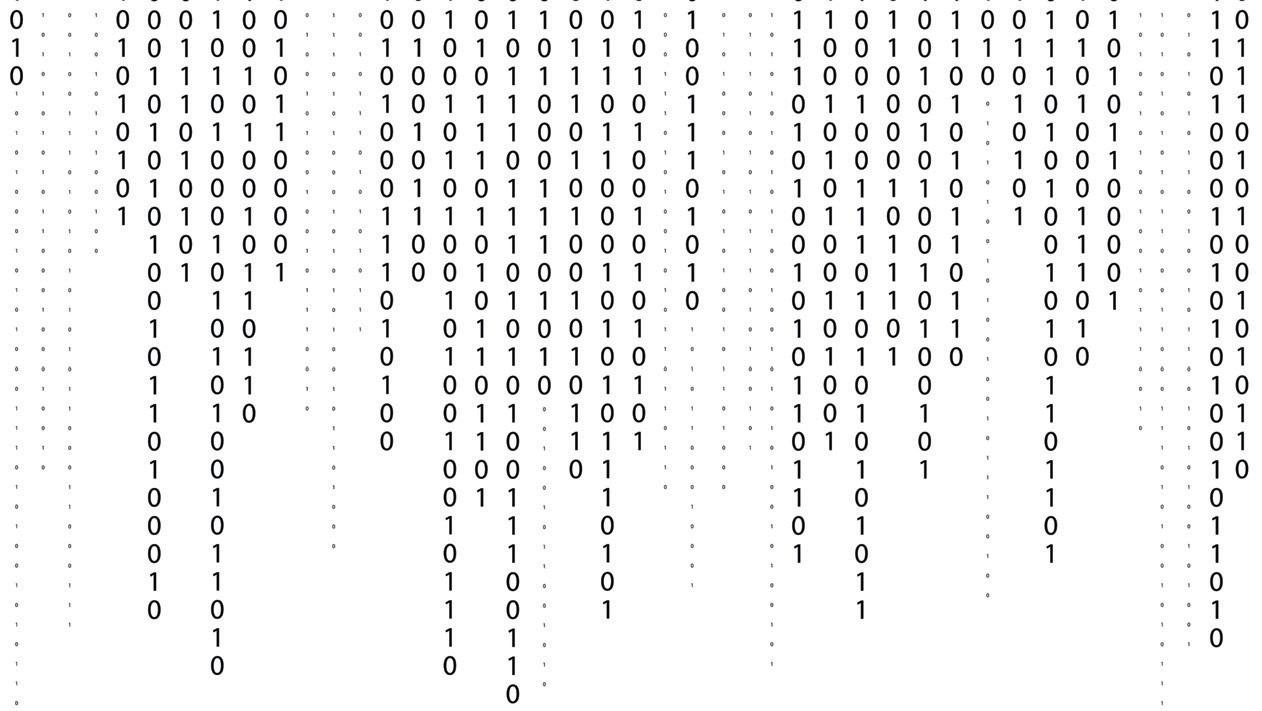
There is a debate between privacy advocates and other security experts about whether the information available on social media sites is OSINT. Although the majority of social media sites require their users to register before accessing site contents in full, many surveys show that social media users expect to have some form of privacy for their online activities (even when posting content with public access). However, security experts generally consider information shared on social media sites as belonging to the OSINT domain because it is public information shared on public online platforms and thus can be exploited for different purposes.
Source: Hassan, Nihad. “Chapter 5.” Open Source Intelligence Methods and Tools: A Practical Guide to Online Intelligence. New York: Apress, 2018. Page: 205
In today’s digital age, it is rare to meet a person who is connected to the Internet who doesn’t have an account on one or more social media sites.
Facebook (www.facebook.com) is the most popular social networking site with the largest active user base on Earth. Facebook has currently more than 2 billion active users worldwide. Facebook offers an advanced semantic search engine to locate anything within its database by using natural English language phrases and keywords. This semantic search engine is called Graph Search and was first introduced in early 2013; it allows Facebook users to type in their queries in the Facebook search box to return accurate results based on their questions/ phrases or combined keywords. For example, you can type: Pages liked by ********* replacing the asterisks with the target’s Facebook username, to return a list of pages liked by the specified user.
Facebook Graph search allows you to search for people, your target’s friends, places (towns, countries, historical places, restaurants), things, photos, pages, groups, apps, events, in addition to entertainment such as music, movies or games. Once your search criteria are entered into the search bar, Facebook will show a list of suggestions; you can either select something from the list or opt for your entered one (see Figure 1).
Knowing how to use Facebook Graph Search is important for online investigators to exploit Facebook’s repository of data. Each Facebook account, or page, is linked to its user social
interactions (like, tag, share, friends list, work, university/school and education information, movie, song, events, geolocation data, and locations). The investigator has to type the right search query to fetch such results. In a nutshell, Graph Search helps you to map each Facebook account to its associated activities on Facebook.
Facebook Graph search queries may be formulated in various ways to give deeper insight into target account or user groups. There are many free online services that can be used to leverage Facebook Graph search capabilities without typing any query! The following are the most popular services:
This website (stalkscan.com) allows you to investigate the public information of any Facebook user. To use this service, enter the Facebook URL of the target profile, and the site will populate the page with all the public social interactions produced by the profile of interest.
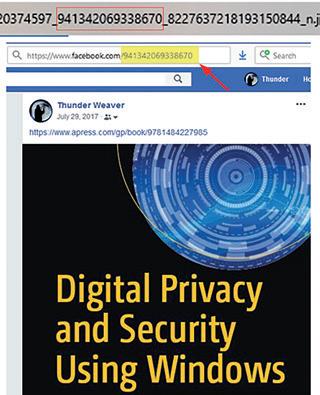
Graph
This site (graph.tips) offers a simple graphical user interface to use the Facebook Graph Search to locate public information about any Facebook user. You need to supply the target’s Facebook username (which can be extracted from visiting the target’s Facebook profile page, as shown in Figure 5-17), and the website will do the remaining work for you.

The psychological status of the person posting the contents on their profile may also provide important information, even more than the content itself. For instance, the true identity of an anonymous Twitter account may be revealed by performing linguistic analysis of the target account. In addition, people may be tracked online by examining the way they use language when they chat or when they broadcast their thoughts online (for example, the way a target uses capitalization, omits or includes words, and pronounces some words). The advances in artificial intelligence analysis systems will make analysing social media accounts more effective and will help examiners uncover the true identity of anonymous social media accounts. This online service (tone-analyzer-demo.mybluemix.net) offers free linguistic analysis to detect human feelings found in text such as tweets, emails, and Facebook messages.
When a user uploads a photo to Facebook, its name will get changed upon saving it in the Facebook database. The new name will usually consist of three long numbers, and the file will be in the JPG format. The second number is relevant to the Facebook profile that upload this image to Facebook originally. To know the source Facebook account behind this image, copy the second number and paste it after Facebook web address www.facebook.com. This should take you to the source Facebook profile. For this tip to work, the image of interest should be posted publicly, or your Facebook account must be a friend of the target profile if the image was originally shared within the friends circle.
There are many online services that simplify the process of acquiring/analysing information from Facebook accounts. The following are the most useful ones:
1. Lookup ID (lookup-id.com): This site helps you to find Facebook personal IDs.
2. Facebook Page Barometer (barometer. agorapulse.com): This site gives statistics and insight about specific Facebook profiles or pages.
3. Facebook Search Tool (netbootcamp. org/facebook.html): Conducts advanced searches on Facebook.
4. LikeAlyzer (likealyzer.com): Analyse and monitor Facebook pages.
5. Search is Back! (searchisback.com) Find people and events on Facebook Search by location, relationships, work history etc.
6. Information for Law Enforcement Authorities (www.facebook.com/safety/groups/law/ guidelines): Offers information and legal guidelines for law enforcement/authorities when seeking information from Facebook and Instagram.
7. A directory of free tools and online services for searching within Facebook may be found at: osint.link/osint-part2/#facebook
Twitter Twitter has a simple search functionality located in the upper-right side of the screen, when using the Twitter web interface, after logging into your Twitter account. A simple Twitter search allows you to perform a basic search within the Twitter database.
However, do not underestimate this little box, as you can add advanced search operators, similar to Google advanced search operators, to your search query to force it to dive deep and return accurate results, as you are going to see next.
The best place to begin your Twitter search is to go to the Twitter search home at twitter.com/ search-home.
Similar to Google, Twitter allows you to use specialized operators to find related tweets more precisely. Twitter search operators are already available in the Twitter search home, just click the link titled “operators” to view them (see Figure 2).
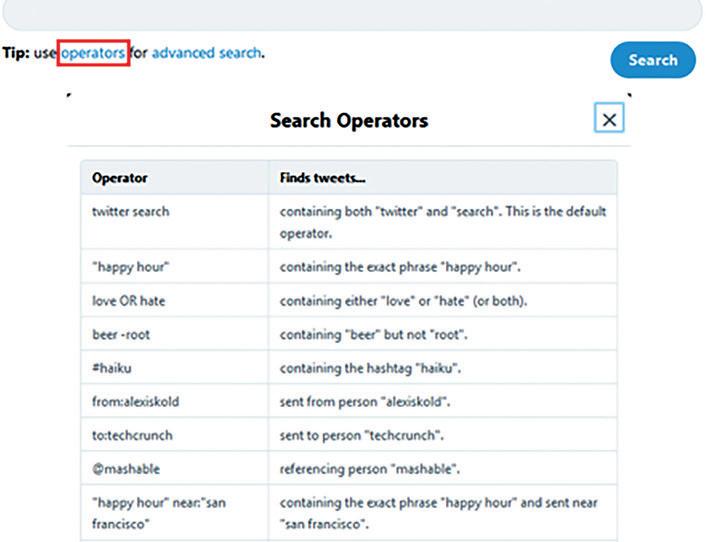
Twitter search operators may be incorporated with other criteria to create more advanced search queries to find related tweets more precisely, the following are some advanced Twitter search queries to start your search with.
• The negation operator (-) is used to exclude specific keywords or phrases from search results. Example: virus – computer.

• To search for tweets sent up to a specific date, use the until operator. Here’s an example: OSINT until:2015-11-30 (this will return all tweets containing OSINT and sent until date November 30, 2015).
• To search for tweets sent since a specific date, use the since operator followed by the date. Here’s an example: OSINT since:2014-11-30 (this will return all tweets containing OSINT and sent since November 11, 2014).
• Use the images keyword to return tweets that contain an image within it. Here’s an example: OSINT Filter:images (this will return all tweets that contain the keyword OSINT and have an image embedded within them).
• To return tweets with video embedded with them, use the videos keyword (similar to the images filter). Here’s an example: OSINT Filter:videos.
• To return tweets with either image or video, use the media operator. Here’s an example: OSINT Filter:media.
• To return tweets that contain a link (URL) within them, use the links keyword. Here’s an example: OSINT Filter:links
 Figure 2. Twitter search operators
Figure 2. Twitter search operators
Twitter search operators are already available in the Twitter search home, just click the link titled “operators” to view them.
• To return tweets from verified users only (verified accounts have a blue check mark near their names), use the Verified operator. Here’s an example: OSINT Filter:verified
• Use the min_retweets: operator followed by a number. Here’s an example: OSINT min_retweets:50 (this will return all tweets containing the OSINT search keyword that have been retweeted at least 50 times)
• Use min_faves: followed by a number to return all tweets with NUMBER or more likes. Here’s an example: OSINT min_faves:11 (this will return all tweets that have at least 11 or more likes and that contain the OSINT search keyword)
• To limit Twitter returned results to a specific language, use the lang operator. Here’s an example: OSINT lang:en (this will return all tweets containing OSINT in the English language only). To see a list of Twittersupported language codes, go to https:// dev.twitter.com/web/overview/languages.
Please note that you can combine more than one Twitter advanced search operator to conduct a more precise search. For example, type “OSINT intelligence” from:darknessgate – Filter:replies lang:en to get only the tweets containing the exact phrase OSINT intelligence from the user darknessgate that are not replies to other users and in the English language only.

The following are online services to help you find information on Twitter:
• All My Tweets (www.allmytweets.net): View all public tweets posted by any Twitter account on one page.
• Trendsmap (www.trendsmap.com): View the most popular trends and hashtags on Twitter.
• First Tweet (ctrlq.org/first/): Find the first tweet of any search keyword or link.
• Social Bearing (socialbearing.com/search/ followers): Analyse Twitter followers of any particular account.
• Spoonbill (spoonbill.io): Monitor profile changes from the people you follow on Twitter.
In today’s digital age, it is rare to see an Internet user who does not have at least one account on one or more social media site. People use social media services to post all types of contents online such as photos, videos, text messages, and geolocation data. They also mention their education, employment history, and the addresses where they live. Personal information such as social connections, places visited, habits, likes and dislikes, family members, spouse, and more can all be found easily. Although social networking sites allow their users to tighten their privacy controls to prevent others from seeing posted content, few people care about such issues and post many of their activities, especially text posts and check-ins, in public status. This makes a large volume of accessible data about citizens’ lives readily available to different kinds of online investigations, and this is the essence of “social intelligence” (SOCINT). •
Using the information gathered from social media sites in a legal case is generally allowed under the following two conditions:
• When acquiring permission from a court to gather information about a specific user, a court order is sent to the intended social media site to hand the information to authorities officially.
• If the information is available publicly (e.g., public posts, images, or videos), then law enforcement may acquire it without a permit, which is the essence of the OSINT concept.
To use the Facebook Graph Search, you need first to sign into your Facebook account (Settings page) and then change your account language settings to use the English language (US). After doing this, your account is ready to use Facebook Graph Search.
Analysing online content, especially content found on social media platforms, becomes important to the forensic context of crime investigation, OSINT intelligence, cyber-exploits, trials, and judicial procedures. This science is known as forensic linguistics.
Nihad Hassan is an independent information security consultant, digital forensics and cybersecurity expert, online blogger, and book author. He has authored four books and scores of information security articles for various global publications. He also enjoys being involved in security training, education, and motivation. His current work focuses on digital forensics, antiforensics techniques, digital privacy, and cyber OSINT. Nihad has a bachelor’s of science honors degree in computer science from the University of Greenwich in the United Kingdom. Nihad can be followed on Twitter (@ DarknessGate), and you can connect to him via LinkedIn at https://www.linkedin.com/in/ darknessgate. Check his dedicated OSINT resources site at: www.OSINT.link

Using the information published on social sites to acquire intelligence about a prospect employee should be handled carefully in accordance with the law to avoid triggering a claim of discrimination by the prospective employee.
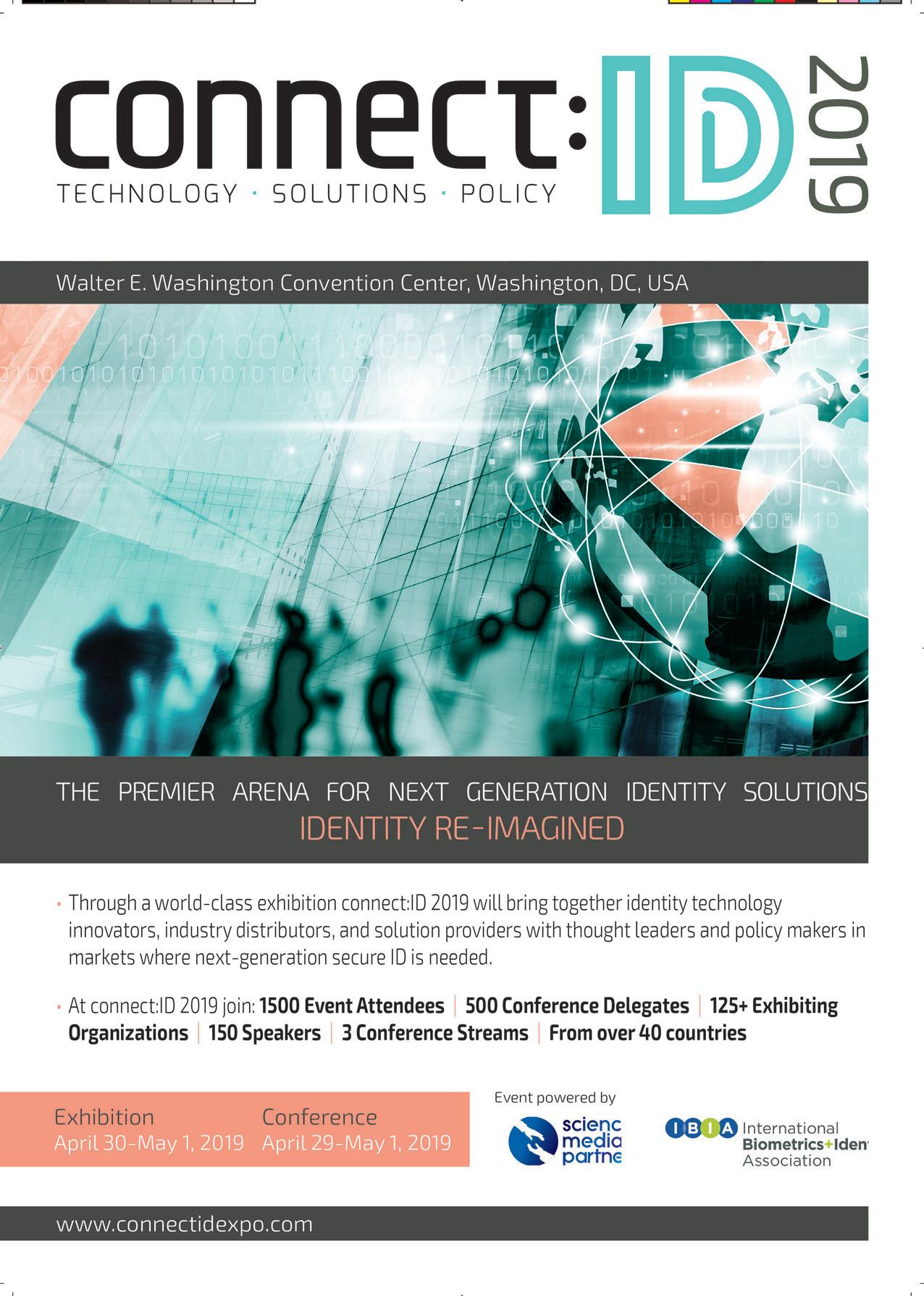
Bryan Cusack reveals the liabilites of AR manipulation.

Augmented Reality (AR) presents an opportunity and a challenge for investigators. AR adds or subtracts information so as to make the human sensory impression of a phenomena more effective. In the first instance AR may be used to find and actuate qualities in evidence. It may also be applied to locate and more clearly communicate digital evidence that is obscured within a context or meaningless without a context. Visualisation tools and court room walk through presentations are examples of the application of AR. All manner of digital evidence is collected by AR devices such as surveillance cameras, mobile phones, and so on, after processing the evidence may also be presented in digital formats. AR allows the investigator and the expert witness to augment the evidence to emphasis the key points in the same way that AR is used in sports reporting. Such capabilities are advantageous; however, they also carry similar risks as advertising where AR can distort the real to such an extent that the representation becomes factually incorrect. The presentation of scenarios by providing the court room with headsets so each member can virtually walk through a crime scene, by managing views, and drilling down on items of interest. By pointing to a blood splatter or bullet holes the user is able to tag points of interest,
access information, and build a 3D visualisation of the crime scene. Documentation may also be included with video and audio tracks. This sort of virtual record may be entered into the court room for projection onto screens or goggles, have AR overlays, providing the opportunity to virtually walk through crime scenes.
In the second instance, AR also creates a material environment in which disputes may arise and digital evidence is required to be collected for just such cases. There are many areas where AR can be found to influence events and actions that have legal risk and potential for litigation. Two recent examples are motor vehicle crashes and the Pokémon AR game that both have deaths and human injuries. Today’s motor vehicles have large numbers of applications that overlay the real environment with signals, maps, driver guidance, and automation. The high profile case of a crashing Tesla car while on auto pilot highlighted the augmentation of the driver environment and the real consequence of failure. The forensic evidence suggested that the driver had trusted the car to overlay the real environment with the right decisions but failed. Similarly, the Pokémon game raged in popularity until the divergence between the AR and the real world delivered human harm and death. Both of these AR situations have been litigated and the courts are working the way
through causality between the augmentations and the real. Any visual overlay may be in this category when human perception is disturbed, and emotional or financial harm occurs. A more complex case arises when a person wearing an eyeglass or following maps on a mobile phone is shown advertising digitally plastered over every surface within view, including footpaths, trees, buildings, park benches, passing cars, lamp posts, the clothing of passers-by, and so on. The user in this instance has a right to switch off the unwanted augmentation of the physical reality and to sue for harm. The problem presented to an investigator is the preservation of this momentary evidence after a complaint is made, and the courts to determine causality.


















Exposure to the sporting world on television (TV) has made many people accustomed to augmented reality (AR). Whether the sport is horse racing, cricket or golf, viewers expect to receive multiple overlays of information that make the competition easier to comprehend. Similarly, news channels provide enhanced digital images, audio recordings, and mixed realities, in order to make reality bigger, better, and more accessible to the viewing audience. AR has the capability of misrepresenting the attributes and properties of a real object or environment by adding or deleting information. The use of AR for advertising or self-promotion stretches a viewer’s imagination and tolerance for real representation. Often manufacturers of foods augment the size of packaging to make their product more attractive by enlarging or shrinking a standard package. This is also a technique to draw attention from weights and other vital metrics a consumer compares the competitors. In promotional campaigns location, size, shape or any other distinguishing feature may be changed to create a more desirable effect for the consumer. Such false designation of origin, false or misleading description or representation of fact, in commercial advertising or promotion, may be taken to task and compensation sought. Seldom are real objects exactly represented in images. The real objects may range from motor vehicles to any consumer item. Such AR practices are common and many consumers accept the distorted representations as being expected and unobstructing to the treat. For the advertisers augmentation represents opportunity for an enlarged market and a competitive tool to fend competitors. In such circumstances decisions are made, perceptions shaped, and actions taken. The human gains knowledge of real situations based on an augmentation and the comprehended illusion. AR makes things that exist distinctive, as in size, extent, or quantity by using digital information to make the human experience of the actual physical reality greater. It does not create a brand new, standalone existence, as in a Virtual Reality (VR) but rather adds or subtracts to the information available for the human senses in the physical world.


AR functions by both increasing and diminishing the digital information available to the human senses, and hence mediates the normal or natural stimuli a human experiences. In some instances, information added to assist human comprehension and in others, reduced to assist comprehension. An example of adding is a hearing aid or TV sports coverage, and reducing is image cropping or colour toning. In both instances, the risk of removing or adding information that impact the safe exercise of human conduct in a real world has consequences for the vendors of the technology. When information is removed to lessen the amount of unwanted visual distractions in, for example, automated vehicular control, and then an accident may be
associated with the action. The augmentation of reality may occur in any of the five human senses or a combination of each. The most common sense is vision, but hearing, touch, taste and smell also provide grounds for AR.
AR research has focused on how to augment the sense of sight. Much of the research has been into how to trick human eyes into comprehending images that are either enhanced or diminished in information. However, human eyes perceive accurately and are difficult to trick into accepting digital content as physically real. The problem of digital displays in two-dimensions is solved by a variety of intermediary filters to create the illusion of three or more dimensions. The first attempts were TV screens and now holographic projections are augmenting the dimensional reality. Programmers mix or delete digital content with real images to let the human mind comprehend the image as real. These applications perform a variety of functions, from displaying digital content on two-dimensional images, to augmenting physical objects recognized in the real world. Walking directions are displayed directly on the real path a user sees through their device’s video
In the real-world AR may be used to project onto buildings and other objects in order to communicate an effect or message. Such distortion of reality may have recourse to law for an owner of real property who may claim trespass, nuisance, easement, protection, or other potentially liable claims. Real property is a term that distinguishes a physical parcel of land from other sorts of property, such as portable objects (personal property) or abstract, intangible expression (intellectual property). The ownership of real property carries the right to possess and exclude others. The context is helpful in considering digital overlays of real property, but many nonpossessory rights also exist that may be argued to allow a digital overlay without physically occupying it, for example, google maps. The law provides various remedies for violations of a landowner’s rights that may be considered in relation to AR. Trespass occurs when a person enters a property without permission and the owner may eject the trespasser and recover any damage that may have been caused. In AR this equates with disrupting a signal or transmission. Similarly, a trespasser is afforded protection from harm unless they resist, and minimal force may be used. In AR the way a trespasser is removed is equally important and no unreasonable harm to their person or properties may be actioned. Other property rights also require consideration such as nuisance and the right of quiet and peaceful enjoyment. Visual overlays can be in this category when the owner’s perception is disturbed, and the owner suffers emotional or financial harm. AR technologies are as liable to property dispute as is any other technology.

There are many areas where AR can be found to influence events and actions that have legal risk and potential for litigation.
camera. Mobile devices are the biggest users but navigation is also a prominent motivator for augmenting visual perception in vehicles. These navigational aids mix images of real world objects and relationships with digital information to make vehicle control easier for the pilot and driver. They also allow the pilot or driver to enter real world locations and situations that they have never experienced or seen before and perform safely. These include audio, displaying driving directions over a driver’s field of view, enhancing safety by highlighting roads in foggy weather or calling attention to road signs. In the advertising industry the addition (overlay) of information to images is a long established practice. Projection mapping systems are able to track fast-moving objects so precisely that it can project an advertisement on a bouncing tennis ball or a low flying aircraft. Digital eyewear is a flagship research area in visual AR. The eyeglass has been a market leader and now mobile phones are being equipped so that users can hold a mobile device out in front of themselves to see the augmented overlay in its video.
Technologies that enhances the sense of touch are fewer in number as their reach is less, but after visual research, this field has the most promise for growth and delivering meaningful AR experiences. Products are available to turn touch computer screens into feel screens that generate any number of artificial textures, edges, or vibrations. It accomplishes this illusion through the use of touch pixels that have been named Tixels. Tixels work by sensing Coloumbs’ electrical force, and by passing an ultra-low electrical current into insulated electrodes. This creates a small attractive force to finger skin and by modulating the attractive force generate artificial sensations. The application can be generalized by wrapping a human hand or skin with a flexible sensor thinner than plastic wrap and ultra-light to create an e-skin. Another solution to haptic augmentation is precisely timed air puffs that create physical sensations. These surfaces of sensations may be managed to encapsulate a human experience and to augment reality. The Apple Watch provides an entry level haptic experience for users by providing physical feedback in a coordinated vibrator and skin touch. It can provide different kinds of haptic feedback and buzzing directionally to provide subtle directions or tapping lightly when a friend wants to say hello. FitBits also use haptic connectivity to monitor biometric behaviour and to give user feedback.
The augmentation of human audio communication has a long history of use in the application of hearing aids that amplify sounds to compensate for human weaknesses. Sound conditioning where digital information is also removed is used in environments where there is information overload and also to control potential damaging sound waves. Applied research projects have used and adapt sound waves into AR synthetic vision using auditory video representations for blind individuals to effectively see the real world around. Also next-generation hearing aids allow selective listening in noisy environments and filters for automatically blocking sudden or unexpected loud noises while allowing for emergency alert signals. Smell and taste are the least explored areas because they usually require chemicals rather than digital intermediation. However, they can directly affect emotion, mood, and memory. These triggers are useful in developing AR effects for humans whose other sensors are diminished or non-functional. Most smell and taste applications are analogue, but researchers are developing proposals such as the ‘digital lollipop’ that can simulate taste. It works by fooling the human sense by varying the alternating current from the lollipop and slight but rapid changes in temperature. Advertisers may use this concept to include the taste of a product on a computer or television screen. Similarly, movies may become more interactive, allowing people to taste the food an actor is eating. The extension of the AR is to allow users with food allergies to taste the foods they cannot and gamers to get VR rewards. In principle, AR can allow blind or deaf users to ‘see’ or ‘hear’ with their tongues, or add extra-human senses. The challenge for investigators is to understand these AR constructs and to acquire tools that will extract digital evidence from each technology. The challenge for the courts is to fairly determine causality weights between the real and the augmented.
Criminal and civil charges may arise from physical injury. AR may increase or reduce the occurrence but it is a probable factor when negative risk materializes. Injury is generally categorized into three classes based on the mental state of the individual: intentional, strict liability (mental state not required), and negligence. AR has the highest likelihood of being in the third category. The unique manner in which AR blends digital and physical data
Augmented reality is an interactive experience of a real-world environment where the objects that reside in the real-world are modified by the addition or subtraction of information. Augmentation may impact any or many of the five human senses to generate a human experience that is different from an un-mediated interaction, for example a digital hearing aid. Perceptual information is managed across multiple sensory modalities, including visual, auditory, haptic, somatosensory, and olfactory. In this way the human experience is altered in a fashion that is uncommon to the real world interaction. Unlike virtual reality, which creates a totally artificial environment, augmented reality uses the existing environment and overlays new information on top of it. As a consequence AR technologies are noticed by their absence rather than presence. They are seamless and immersive. The advantage of AR is the selective exposure of stimuli that create a focused and concentrated view of an often cluttered and undifferentiated real world. The human generalises the selected stimuli to a sense of being superhuman, powerful, in control of the real, and all knowing.
Van Krevelen, D. and Poelman, R. (2010). “A survey of augmented reality technologies, applications and limitations”. International Journal of Virtual Reality. 9(2), 1-9
This is paper is a survey that introduces the scope and potential of augmented reality (AR) technologies. It provides an evaluation of the proposed applications and suggests perception of the tipping points between perceived realities and expectations present limitations on the use and uptake of the AR technologies. It is a good starting point for reading on the issues.
together is likely to lead to unintended but foreseeable accidental injuries. The failure to exercise the care toward others, which a reasonable or prudent person would or would not do in the circumstances, are grounds for actions. The plaintiff has to prove:
• The defendant owed the plaintiff a duty of care
• The standard of care that the defendant was owed
• The defendant breached the standard of care.
• The defendant’s breach of their duty caused the plaintiff’s injury. This is a legal policy judgment of whether there was a sufficient link between a “cause” and its indirect “effect” that it is fair to hold the defendant liable
• The plaintiff suffered damages because of the negligence.
To prove AR is a causal factor requires a resolution of issues in which it is probably above a threshold metric. Issues of proximate cause come into play when there are multiple steps that occur between what the defendants did and what happened to the plaintiff. At some point, the indirect consequences of a defendant’s actions become so remote and unforeseeable that it would no longer be justifiable to hold the defendant accountable for the result.
Injury may also be claimed for emotional harm that is caused by the acceptance of the AR as a true representation of the real situation. A complainant may experience, fear, vulnerability, trickery or other harmful emotions and litigate. Similarly, games that involve movement and real interaction with the player’s physical environment may cause injury. In such cases, injured players of AR games will argue that, by directing players to travel to various locations and perform certain tasks, the game designers undertook a duty to ensure that those activities would not place the players at undue risk of injury. In some instances, Pokémon players have slipped and fallen in dangerous conditions, and others experienced social harm in the situations the game took them. These lawsuits then involve ascertaining just what duty the game designers owed to their players, whether they breached that duty,
and whether the breach was the proximate cause of the player’s injuries. Claims for distraction, inaccuracy and mis-representation result when the usual cues a human expects are augmented, and the interaction with the real environment becomes clumsy or inappropriate.
The manipulation of images is a marketing tool that is readily used. Digitally enhanced photos are central to media communications and use AR for the stylization. Some photos are manipulated to the point that the match between the real object and the augmented one is disconnected and legal arguments are raised to prevent the use. In some instances, regulators have products removed from the market because the vendor’s cannot not prove that the advertised products were able to produce results like the ones shown in the augment images. Fashion companies are also criticized on a regular basis for altering photos of clothing models to give them physical features so extreme as to be anatomically impossible. The difficulty of precise rendering and a drive to win market share result in augmented advertising that are unrealistic to the point of being deceptive. By definition, digitally enhancing physical reality is a fundamental element of what AR does. Also Television broadcasts (especially of sporting events) are increasingly using digital billboard replacement technology to overlay advertisements in the physical world with digital media from other companies. One company purchases the rights to depict the replaced physical banners in the broadcast, and the other to the physical sign and not to the broadcasts. AR allows the marketing practice and the use of such replacement technologies. AR is hence widely applied in advertising campaigns but promotes concerns of acceptability, deception, and ownership rights. For the Digital Investigator regulation is required that the advertising agencies are compelled to retain accurate logs of the dates, times, and content of VR alterations and promotions. This would be a step toward accountability and addressing some of the AR challenges for investigators.
Expert Tip
Augmentation technologies are everywhere to alter the natural or common experience of environmental stimuli. But beware. Don’t be lulled into a sense of compliancy and dependency on one version of events. Maintain external reference points and triangulate data to determine the real. Tampering with human perception introduces potential causal associations with consequences. It can be argued that there are many moderating variables in a human action and that the isolation of causal factors is impossibly difficult. Such a view holds in some contexts but in technology-mediated events causal factors may be found between the technology control functions and the controlled object actions. Also causal factors can be found between the mediating technologies and the human controller(s). For example, in the case of a crashing car on auto-pilot the association and disassociation of causal factors may be resolved into probabilities and grounds for civil prosecution, or beyond reasonable doubt for criminal prosecution. Use AR technologies for their advantages but moderate the trust a user may have by benchmarking against real checkpoints.
FURTHER READING
NTB, (2018). National Transportation Board, Preliminary Report Highway HWY18FH001, 2018 This highway crash report provides insight into the use and misuse of AR technologies for controlling a motor vehicle. The autonomous use of AR technologies is appealing but has limitations a human must consider and compensate when interpreting the relationship to material harm. More research is required into the human machine interface and the augmentation of meaning a human constructs, with and from the AR intervention.
Technologies that enhances the sense of touch are fewer in number as their reach is less, but after visual research, this field has the most promise for growth and delivering meaningful AR experiences.
The nature of digital evidence presents a multitude of challenges for investigators. Evidence may reside on many devices and servers that have a multitude of contexts and different jurisdictional locations. The completeness of evidence may always be challenged and also the authenticity of evidence that is collected from fragments of digital data. For example, the image of digital data may be the result of cloud acquisition of a smartphone video of a movie filmed illegally in a movie theatre. However, in the cloud and on the web there are many images of the same fragments and little to differentiate one from the other. Such fragments have the trademark watermark but limited further markings for evidential purposes. Similarly, the evidence on devices may not imply the owner or the user of the device may be associated with any of the activities of investigation interest nor necessarily the origin of the digital artefacts. In such conditions the digital investigator is strenuously challenged to have complete evidence but must report factually and compliantly the evidence found, the contextual detail, and the procedures used. As these examples demonstrate, advances in digital and computing technologies make investigation and litigation more complex and data burdensome. The rapid expansion of technology has made much more work to do by expanding the volume of information for processing. Increasingly, the digital data stored and exchanged by the people and companies involved in lawsuits is becoming a volume problem, and when AR becomes more widely adopted the volume and the complexity of evidence will increase.
The locating and acquiring of all the required evidence in VR contexts is difficult. AR, like the Cloud and IoT concepts, is to provide users data and information access. This implies that as people move in different ways around geospatial regions their connectivity and data have to be continuous and relevant to their experience. In AR contexts there are a multitude of user experiences such as access to other people’s photo streams when in physical proximity to those people, advertising in relation to proximity and space, and so on. Sites and mobile phone applications track users’ locations in real time and offer them discounts to businesses near their current physical location and alternative venues for transaction. In these circumstances the digital evidence is fragmented over many servers and devices to the point an investigator
cannot be certain all the evidence is available. Cost also comes into the problem of collecting and processing AR evidence. If an investigator is to take a similar device and walk the same location then the cost is high and there is no guarantee the AR information is consistent from one time to another. As the data disperses, it becomes harder to actually visit the locations where the person being investigated travelled, and to retrieve the bits of digital data they left behind in nearby connected devices. The point is not to suggest such investigations are futile but to indicate the potential for incompleteness, potential volumes and the need for careful investigation planning and audit.

Carmigniani, J. Furht, B. Anisetti, M. Ceravolo, P. Damiani,T., and Ivkovic, M. (2011). “Augmented reality technologies, systems and applications”. Multimedia Tools and Applications, 51(1), 341-377































The concept of augmented reality is well accepted in the world of multimedia studies. It has a variety of demonstrations in advertising, movies, makeup, overlays, walk through, and similar managed communication uses. This paper reviews the system application of AR in communication and the advantages of enhancing or diminishing visual experiences.

The work Digital Investigators get comes from civil and criminal assertion of the laws in relation to a wide range of human conduct. The discussion of AR complexity raises some of the challenges added to the growing list. The data enhancement by AR technologies has potential for real property impacts and claims for damages. The example of injuries sustained while playing the AR game Pokémon illustrates the general problem area, and shows example of cases where Digital Investigation has occurred. A more specific issue is the overlay of real properties by advertising or distorting layers of information that impact the value of the real property. This may occur once the
real property has been digitized or information overlays that include words, colours and images may be projected onto a real property. In the digital world of TV this may include a competitor brand being overlaid on another or branding removed for clean shots. In the real world building and other objects or scenes may be projected onto in order to communicate an effect or message. Such augmentation of reality can have recourse to law for an owner of real property who may claim trespass, nuisance, easement, protection, or other potentially liable claims. AR has increased the complexity of digital investigations and increased the number of challenges an investigator faces. •
1. Azuma, R., Baillot, Y., Behringer, R., Feiner, S., Julier, S. and MacIntyre, B. (2001). “Recent advances in augmented reality," IEEE Computer Graphics and Applications. 21(6), 34-47.
2. Azuma, R. (2017). "A survey of augmented reality," Teleoperators and Virtual Environments. 6(4), 355-385.
3. Brooks, F. (2009). “Research directions in virtual environments”. Computer Graphics, 26(3), 153-162.

4. Chen, H., Dai, Y., Meng, H., Dai, Y., Meng, H., and Chen, Y. (2018). “Understanding the Characteristics of Mobile Augmented Reality Applications”. Proceedings of the 2018 IEEE International Symposium on Performance Analysis of Systems and Software.
5. Höllerer, T. and Feiner, S. (2004).
“Mobile Augmented Reality, Telegeoinformatics: Location-Based Computing and Services”. Taylor and Francis Books Ltd., London, UK.
6. Kiron L., Kimberly, R., Tadayoshi K., and Franziska R. (2018). “Towards Security and Privacy for Multi-user Augmented Reality: Foundations with End Users”. Proceedings of the 2018 IEEE Symposium on Security and Privacy.
7. H Qiu, L., Nguyen, M., Huy T., and Le, H. (2017). “Using augmented reality on smart devices: Motivation, design, and implementation”. Proceedings of the 2017 International Conference on Image and Vision Computing, IVCNZ.
8. Wither, J., Tsai, Y., and Azuma, R. (2011). “Indirect Augmented Reality”. Computers & Graphics, 35, 810–822.
Dr Brian Cusack comes from a background of academic research in IS Security and IT Forensics. He currently directs the Cyber Forensic Research Centre and is Adjunct Professor to the ECU Security Research Institute; and Professor at the Graduate Research Institute.

The data enhancement by AR technologies has potential for real property impacts and claims for damages.

You can get a subscription for your library or organisation from DFM… You’ll get:





Unlimited subscribers, but with 20 concurrent users online at any one time A single sign-on for all subscribers, which is changed every 6 months
5 print copies of each issue of Digital Forensics Magazine

In a DFM item a few issues ago I mentioned being a member of LinkedIn (LI). For readers who may not be familiar with it, LinkedIn. com is, in contrast to social media sites or apps like Instagram, a professional networking site. In an effort to add value to the user experience, LI also will show links to training opportunities that they think may be useful to individuals based on their profiles. I am an information security professional by day, and LI’s algorithm concluded that I might enjoy a short video course on blockchain. That wasn’t a bad guess, really, even though I’m already familiar with the topic. What caught my eye was the title: ‘The immutable distributed ledger’.
To be fair, I have not yet watched the training video. The title alone brings up some issues, and I would like to address those first. In order to do so, let’s take a quick look at the distributed ledger. This is the recordkeeping mechanism used to log transactions in cryptocurrency environments; anyone who participates in such a currency market will have a copy of the ledger. Using our hypothetical example of DFMCoin, anyone who mines and uses these coins will have a local copy of the DFMCoin ledger, which is a record of all DFMCoin transactions that have ever taken place. We should note the one of the more popular characteristics of cryptocurrency is the capability of the user to remain anonymous, and having a complete record of all transactions may seem to run counter to that idea; however, the ledger will simply record who sent how many coins to whom and when. It may help to think of a ledger as a syslog type of data file: as new events occur, entries are appended to the ledger file of every user of that particular currency. If DFMCoin had 5000 users, then each transaction would be recorded in 5000 different locations.
The more problematic word in the training video title is immutable. Black’s Law Dictionary does not include either mutable or immutable, so we shall turn to merriam-webster.com for a definition of mutable:

1: prone to change
2a: capable of change or of being changed
2b: capable of or liable to mutation
This makes sense, as mutable and mutation share a linguistic root. Immutable then, as one may expect, means not capable of or susceptible to change (ibid). In a very early issue of DFM I published an article which covered inter alia mutable and immutable media: media which is read-write (hard drives, flash drives, etc.) is considered mutable, as the contents can be modified or deleted. Immutable media items would include things like DVD-Rs and paper; these are not prone to change or even in many cases capable of being changed. We should emphasize that, in this context, destruction is not considered to be modification. A printed document, for example, can easily be destroyed but making changes to the content would be a non-trivial exercise: paper is not designed to be capable of change. (Of course pencils do have erasers, but this is also not the context we are addressing.)
So we are left with the following: mutable items are capable of being changed or are prone to change, and immutable items are not capable of being changed. You may recall that the title of the training item was ‘The immutable distributed ledger’. If the ledger is designed to be updated when certain events occur, how can it reasonably be described as immutable? The answer is that it cannot.

However, I think I understand what the course creator (or at least the person who named the course) had in mind.
Cryptocurrencies are decentralized by design: there is no single organization or entity that controls something like Bitcoin, a popular cryptocurrency. As we saw above, everyone who participates in Bitcoin, (hypothetical) DFMCoin, etc. has a copy of the appropriate ledger; to oversimplify a bit, when Party A sends coins to Party B, everyone’s ledger is updated. This is categorically not the behavior of an immutable object, but the interpretation seems to be a bit less literal than that.
If a currency is managed and controlled by a centralized entity; e.g. a bank, then there is one location for all of the recordkeeping to occur. “One” here is notional: there will likely be multiple copies, backups, and so forth but they will all be contained inside one

organization. In other words, if someone wanted to destroy a bank’s records, that person would have a comparatively very limited set of locations in which to find those records. Cryptocurrencies, on the other hand, can potentially be used by anyone on the planet, which broadens the potential search area considerably. If an individual wanted to make a change; e.g. to delete the record of a specific transaction on a specific date, they would need to locate all copies of the ledger, compromise and gain access to the systems hosting those ledgers, etc. Basically, a stunning and impractically large number of events would need to happen in order for anyone to make a change to a specific ledger. To make matters even more exciting, these events would need to happen almost simultaneously, or at least in a very short time, in order to make all of the changes before the news broke of the attempted modifications.
Going back to the idea of mutable vs immutable: the distributed ledgers are clearly not immutable in the literal sense. As we have seen, a ledger that is literally immutable could not be updated and would be rather useless, except as a snapshot for historical purposes. We have also seen that while the ledgers are mutable, i.e. capable of being changed, actually exploiting that fact in order to make changes is incredibly impractical and bordering on the impossible. Nevertheless, I still believe the training course needs a better name.

DFM will be a supporting partner for the Forensics Expo Europe, taking place in Olympia (formerly Earls Court), London on 05-06 March. Please see the advert elsewhere in this issue of DFM. I will be presenting at the conference on a sticky evidentiary topic, and you will not want to miss that.
Just before this editorial was to be sent off to the DFM senior editor, something very interesting happened: part of the Ethereum Classic (ETC) blockchain was rewritten, and one or more persons managed to “double spend” over $1US million in ETC coins. Please see the Legal News section for additional information.


Many people make New Year’s resolutions. From the 1st of January onward, they vow to do something differently: exercise more, be nicer, get promoted, and so forth. As humans we seem to like the idea of a fresh start, but we may wait until a boundary date to start making changes. New Year’s Day may be the ultimate boundary date: on that day, there is the greatest potential for making changes in the coming year simply because there is the maximum amount of year remaining in which to get things done. (We humans also like to make things easier on ourselves.)
With that in mind, it makes sense that Vietnam should declare that its new cybersecurity law (CSL) would go into effect on 01 January 2019. By the time this issue of DFM is released, the small Asian country will have been officially operating under its new security requirements for over a month. It is unlikely there will be any precedents set prior to publication, so we will plan to revisit the post-implementation results in a future issue.
Please note the following: at the time of this writing, the full and final version of the law has not yet been published. The analysis and verbiage in this article will be based on
the final draft version, which was approved by Vietnam’s National Assembly in June 2018. Readers should also note that this document is a translation, as the original work was written in Vietnamese.
Vietnam ratified a new national cybersecurity law in 2015. This law was influenced by other countries’ statutes in effect at the time, and it focused on security and safeguards for areas such as critical infrastructure, government owned or operated systems, and online commerce. Those areas are also present in the 2018 statute but there are some substantial additions which have caused a fair amount of concern.

In May of 2018, an article on Business Insider’s web site described a number of concerns that were raised by the proposed draft of the new law. The Deputy US Trade Representative stated to Vietnam’s Prime Minister that he felt the new law could present some challenges. A written statement from the US Embassy mentioned “…concerns about Vietnam's proposed cybersecurity law, including the impact of localization requirements and restrictions on cross-border services for the future development and growth of Vietnam's economy”.
These concerns were echoed quite loudly by some largish commercial organizations. Readers may (or may not) be surprised to learn that chief among these companies are both Facebook and Google. The tech giants pushed back primarily on the new law’s requirements for data localization: specifically, the CSL requires companies that acquire and retain data on Vietnamese citizens to store that data within the country’s borders. In other words, Google and Facebook would be required to open offices, and most likely one or more data centers, somewhere in Vietnam. This would be a non-trivial financial exercise, of course, but that may not be the largest hurdle. The technical issues of data localization in-country should not be insurmountable, either. The largest effects may be found in the companies’ data mining operations: there would need to be discrete analysis silos within Vietnam, which may interfere materially with their respective revenue streams.
In July of 2018, the published opposition to the new law grew. A total of seventeen legislators (lawmakers) from the US Congress signed a letter urging the aforementioned large tech companies to resist the restrictions proposed
Scott Zimmerman examines Vietnam's new cybersecurity law, which went into effect on 1 January 2019.in the new Vietnamese law. The letter stated clearly the request: "If the Vietnamese government is coercing your companies to aid and abet censorship, this is an issue of concern that needs to be raised diplomatically and at the highest levels". It is interesting to note that the original objections posed by Facebook and Google were aimed only at the data localization requirements; they did not object initially to the content restrictions that the Vietnam government sought to impose. The letter writer(s) had this in mind as well and included a not-terribly-subtle reminder to the recipients: "We urge you to live up to your stated missions to promote openness and connectivity". Well, then.
As mentioned, the final version of the law may have been passed without significant modification, but we will take a look at the final draft of the CSL and see precisely where the original concerns were rooted. We will also examine the areas that differ materially from other cybersecurity legal frameworks. Altogether there are 43 individual Articles, grouped into seven chapters, so let us start at the beginning and work our way up.
Like many other such laws, this one contains a glossary to ensure all readers understand the

terminology being used. Most of the terms in the CSL are fairly standard, cyberattacks, cybercrime, and so forth, but one item is a bit unusual.
5) b) Core services systems include national information routing and navigation systems, national domain name systems (DNS), national authentication systems (PKI/CA), and the internet connectivity and access service systems of enterprises providing services on telecommunication networks and the internet, and value-added services on [sic] cyberspace;
It is quite rare for a clause in a security law to specify a particular technical capability.



In addition to control over the Domain Name Service (DNS), the Vietnamese national authentication system mandates the use of a Public Key Infrastructure (PKI) and a Certificate Authority (CA) as part of its environment.


This is a very ambitious requirement: there are large corporations that have not achieved the technical maturity to deploy and manage a large PKI; doing so with an actual country may be a bit more involved.
Some background may be in order. A PKI is an asymmetric encryption system, meaning that different keys are used for encryption and decryption. A symmetric encryption system uses
the same key for encryption and for decryption, a much less secure option. Within the PKI, the CA issues both public and private certificates (keys) to entities that have sufficiently proven their identities. Readers may have seen email signature blocks containing other users’ public keys: including this public key means that other individuals can encrypt data for use by the key’s owner. When the public key owner receives the encrypted material, he can decrypt it using his private key. The public and private keys are generally called a “key pair”.
An important part of any PKI, of any authentication mechanism really, is the capability to revoke credentials. Interestingly Vietnam’s cybersecurity law does not mention this functionality. In years past when PKIs were fairly small, certificate revocation was addressed by two items: The Certificate Revocation List (CRL) and the Compromised Key List (CKL). Someone who, for example, resigned from an organization would be on the CRL, and someone whose passphrase had been stolen or shared would go on the CKL. The purpose of these lists was to ensure the other PKI users would be updated and would know not to trust the listed keys. However, as PKIs grew these lists became unmanageable, so they were replaced with something called
an OCSP responder. The responder is a server that uses the Online Certificate Status Protocol to determine whether someone’s keys are still valid. For instance, if Person A wishes to send encrypted email to Person B, Person A’s email application is likely to contact the appropriate OCSP responder to confirm that Person B’s certificates are still good.
One likely goal of the PKI requirement, aside from security, is to give the government the capability to hold all keys related to their systems; this will allow them to decrypt any and all communications for monitoring purposes. As we will see, the CSL contains a number of items related to controlling electronic content.
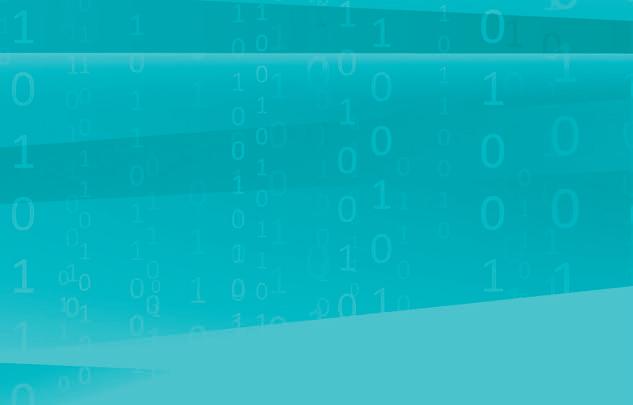
Article 5 begins with a fairly standard list of desired capabilities: security audit and governance, incident response and restoration of services, and the use of encryption. Interestingly, nowhere in the translated CSL is there a reference to actual forensics. Here is where we begin to see some lessstandard provisos in this law.
i) Required deletion, access to or deletion of illegal or untrue information in cyberspace prejudicial to national security or social order and safety;
Item i) seems to be addressing the government’s prerogative to delete, or to compel individual(s) to delete, information that is considered to be falsely negative, e.g. if someone posted a derogatory or defamatory item about Vietnam’s leaders that is known to be untrue. This is in rather stark contrast to other parts of the globe where such statements are almost required: one need only look at a sampling of message boards and discussion forums to see an extensive collection of such comments.
l) Blockade of and restriction on information system operations; suspension, temporary suspension or required stop of operations of any information systems, or revocation of the domain names thereof in accordance with laws;
Item l) is quite interesting: note the “revocation of the domain names” as a protective measure. We saw above that Article 2 specifically calls out DNS as a critical resource (as well as PKI). Coupling that with item l), we may infer that the government of

Vietnam has reserved the option to modify and/or shut down the nation’s DNS in order to stop the dissemination of undesirable content. Doing so will not comprehensively prevent people from accessing the content, but it may foil less-technical users. Maintaining control over the DNS could also give the Vietnamese government ready access to a great deal of interesting log data: specifically, they would be able to capture which [endpoint] IP addresses attempted to access which web sites. They would need a robust logging capability to do so, but hardware is rather inexpensive these days.
In general, a cyber security law will have at its core a list of activities that have been deemed illegal. Typically, such lists will include rules against attacking systems and networks owned by the government, devices used for public services, systems used to support trade and commerce, and so forth. Other topics such as libel may be covered under their own statutes and may not be called out specifically in a security law, except perhaps as a reference. The Vietnamese CSL is somewhat different in these regards.
Article 8 describes several categories of unlawful electronic acts:
a) [reference to another section]
b) Organising, deploying, colluding with, inducing, bribing, deceiving, involving, training or drilling any persons to oppose the State of the Socialist Republic of Vietnam;
c) Distorting the history or negating a revolution achievement; sabotaging great national unity, offending any religion, or discriminating on the grounds of sex or race;
d) Giving misleading information causing confusion among the people, damages to socio-economic activities or difficulties for authorities’ operations or officers on official duty, or encroaching upon any legitimate rights and interests of any other entities or individuals;
dd) Practising prostitution or social evils or trafficking in human; posting obscene, depraved or felony information; sabotaging the fine customs and practices of the nation, social morality or public health;
e) Inducing, involving or inciting others to commit crimes.
(Please note that the dd) following the d) appears to be an artifact of the translation.)
Some of these offences are standard fare: most countries have some form of obscenity law, and actions against the government are generally discouraged (though perhaps not universally to this extent). The items in bold text may cause some issues for the government as well as for the populace. Take item c) for example: what constitutes “offending”? In that same vein, what constitutes a “religion”? This is not a flippant question. Readers may recall the struggles that took place in the UK, the US, and elsewhere to have Jedi, yes, the ‘Star Wars’ construct, recognized as a legitimate religion to be recognized by the various governments. Without clear definitions and boundaries placed on these two items, the Vietnamese government may find its hands very full simply dealing with offences against [any] religion. Similarly, the wording in item d) appears to be quite vague. Like the universal phrase “other duties as assigned” that is included in so many
employer role descriptions, d) appears to be a catch-all item. Such items can serve important purposes, like the default deny-all at the end of a list of firewall rules, but in this context the clause may be overly broad and may be a potential target for abuse. As an example, let us say that a customer genuinely had a suboptimal dining experience at a restaurant; he then posts an honest accounting of the problems on a travel review site. A poor review, even if accurate, may affect the amount of business that a restaurant receives. Will this be considered an offence under d) since it encroaches on the interests of the restaurant owner? A large number of legal systems incorporate the notion of mens rea, essentially the criminal mindset or criminal intent. For example, a person accidently damaging someone’s property is not treated in the same way that vandalism would be: the difference is intent. Somewhat worryingly, the Vietnamese Cyber Security Law does not appear to draw a distinction between inadvertent and intentional acts.
As one would expect, the CSL includes a number of clauses specific to national security issues: attacks against government owned systems are strictly prohibited and, according to the CSL, will prosecuted and sentences assigned according to current legislation. Recall the section above regarding the Vietnamese government’s use of PKI; here we see how that control will be employed.
4. The Government shall provide for coordination between the Ministry of Public Security, the Ministry of National Defence, the Ministry of Information and Communications, the Government Cipher Commission, relevant ministries and agencies in carrying out verification, assessment, audit, supervision, and incident response and remedy in respect of information systems critical to national security.
The Government Cipher Commission will be asked to use the crypto keys in their possession to decrypt ciphertext where necessary to support audit, governance, and incident response activities.
The full title of Article 15 is “Cybersecurity incident response and remedy in respect of information systems critical to national security”,
but that is a bit much for a DFM section heading. As we saw above, the translation of the CSL does not specifically address forensics by name. It could fall under “remedy”, but on the surface remedy appears to be more about recovery and restoration of system functionality than about undertaking a traditional forensic investigation. However, if we dig a bit further we can see that forensic investigations are included in the CSL, even though they are not identified as such. Here are the requirements:
a) Detection and identification of cybersecurity incidents;
b) Scene protection and discovery;
c) Blockade and containment of cybersecurity incident scope, and mitigation of damages caused by such cybersecurity incident;
d) Definition of targets, objects and scope for response;
dd) Verification, analysis, assessment and classification of cybersecurity incidents;
e) Implementation of cybersecurity incident response and remedy schemes;
g) Verification of causes and tracing of origin;
h) Investigation and treatment in accordance with legislation.
One could make a strong argument that b) Scene protection and discovery describes the need for proper evidence collection and preservation. Limiting the effects of an incident is standard security industry practice, as is getting to the root cause of the incident as described in item g). We can safely surmise that item h) represents the litigation-oriented aspects of the practice: presenting evidence, building cases, holding a trial, and where necessary handing down sentences.
Vietnam’s new Cyber Security Law went into effect on 01 January 2019, and affected entities currently have until 31 December 2019 to achieve compliance with the new requirements. Overall the CSL contains a high level of detail regarding what is expected of the country’s citizens, though some key areas may be too broadly written to be truly effective. As mentioned above, the full text of the ratified law has not (at the time of this writing) been published, though expectations are that the final version will not differ materially from the draft that was approved in June 2018. If significant changes are made or interesting precedents set, we may cover them here in DFM. •
REFERENCES
https://vietnam-business-law.info/blog/2018/7/30/ vietnams-new-cybersecurity-law
https://auschamvn.org/wp-content/ uploads/2018/06/Draft-Cyber-Security-LawVersion-20-ENG.docx
https://www.businessinsider.com/r-usraises-concerns-about-vietnams-proposedcybersecurity-law-2018-5
https://www.businessinsider.com/r-us-lawmakersurge-google-facebook-to-resist-vietnamcybersecurity-law-2018-7
https://www.reuters.com/article/us-vietnamsocialmedia-exclusive/exclusive-vietnam-cyberlaw-set-for-tough-enforcement-despite-googlefacebook-pleas-idUSKCN1MK1HL
Scott Zimmerman, CISSP has been an Information Security practitioner, consultant, presenter, and trusted advisor for twenty years. He has been researching legal issues in computer forensics part-time for over ten years, and is working to bridge the gap between law and technology in this area.

The Legal editorial in this issue addresses the idea of mutable vs immutable blockchains. The short version is that a blockchain cannot be 100% immutable (i.e. impossible to change) because it is required to receive updates: as new transactions are completed, they are added to the distributed shared ledger that allows cryptocurrencies to remain decentralized. Everyone who participates in a cryptocurrency ecosystem will maintain a copy of the ledger, and the idea is that with so many copies of the ledger in existence, no one individual or system can subvert the process and commit fraudulent transactions.
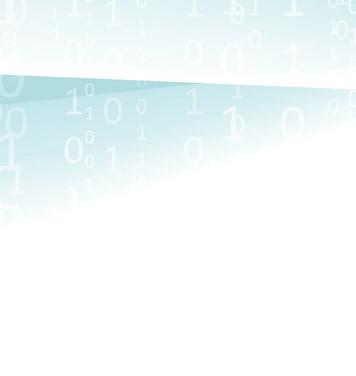



That idea was reduced to shards during the first week of January as the Ethereum Classic (ETC) blockchain was found to have been subverted in dramatic fashion. An article published on the Ars Technica site on 05 January indicated that a significant portion of the ETC blockchain had been rewritten and the coins used in the rewritten transactions had been “double spent”.
How could this happen? Satoshi Nakamoto’s original Bitcoin white paper (https://bitcoin.org/ bitcoin.pdf) describes how in great detail, but a blog post on Coinbase.com, which formed the basis for the Ars Technica article, does so in a more digestible fashion:
“The function of mining is to add transactions to the universal, shared transaction history, known as the blockchain. This is done by producing blocks, which are bundles of transactions, and defining the canonical history of transactions as the longest chain of blocks.
If a single miner has more resources than the entirety of the rest of the network, this miner could pick an arbitrary previous block from which to extend an alternative block history, eventually outpacing the block history produced by the rest of the network and defining a new canonical transaction history.
This is called a “chain reorganization,” or “reorg” for short. All reorgs have a “depth,” which is the number of blocks that were replaced, and a “length,” which is the number of new blocks that did the replacing.
This brings us to the most recent update available at the time of this writing;
Updated Jan. 7, 10:27pm PT: … we have identified a total of 15 reorganizations, 12 of which contained double spends, totaling 219,500 ETC ( $1.1M).
What has happened is that the Ethereum Classic blockchain has been forked, and the original timeline and the newly-created timeline are seen as equally valid within the structure. This parallel existence has allowed someone (or someone’s) to appropriate over $1US million in Ethereum coinage. The investigation is ongoing, but so far the Ethereum team has detailed a sizable list of events that have occurred in their realms, including the aforementioned reorgs and double-spends, but they have not yet released any details on who might have done this or specifically how. This is a groundbreaking event and will very likely warrant further examination in future. •
During their last session of calendar year 2018, the Australian government passed a bill allowing law enforcement organizations to demand cleartext copies of encrypted messages sent via social media and other apps. The Aussie police have been increasingly vocal about their stated need for this: apps like WhatsApp allow users, including persons of interest, to communicate securely, which has flummoxed the fuzz in any number of cases.

The new bill allows the Aussie police to request a “computer access warrant”, which permits the plod to acquire information directly from a targeted person’s device, e.g. a mobile phone or a laptop. The bill makes further provisions for something called a “technical assistance notice”. This notice would be issued, for example, to a telecommunications provider and would be the channel through which the police would request assistance in decrypted targeted communications. Finally, the Attorney General would have the option to invoke a “technical capability notice”. This would be a request from the AG to, say, an app company to build an additional capability specifically to allow law enforcement to have [properly authorized] access to unencrypted streams.
As one would expect, there are serious concerns about this bill. Equipment manufacturers and service providers are seeking assurances that no “systemic weaknesses” would be caused by these access methods. After an industry group provided a report detailing their concerns and objections, the Australian government proposed a list of modifications to the bill. Chief among these was the promise that “[T]he new encryption cracking powers will be limited to “serious crimes”, defined as terrorism and child sexual offences or other offences with a term of imprisonment of three years or more”. This and the other suggested changes did very little to allay the concerns of industry and of human rights organizations.

DFM supports the Forensic Europe Expo on 5th/6th March 2019, at Olympia, London.




International Standardisation for Digital Forensics has proceeded over the last 8 years to produce a data set of inter-related agreements for the exchange of evidence. To many the complexity of Standards, their numbering and obscure contents fail to make practical sense, and confuse the entry points for effective use. A roadmap is provided in this paper for Standard information access and optimal use.


Prof. Brian Cusack has been an International Security and Forensic Standards negotiator for over 15 years and edited ISO digital forensic standards to publication. He is currently Director of the Cyber Forensic Research Centre NZ and Professor at the Graduate Research Institute.

Digital evidence gathered through a traditional investigation – e.g. imaging a mobile device – is well understood. Nowadays it is more likely that evidence will be gathered from multiple remote systems which are not under the control of the investigators. We will take a look at two categories of remote evidence: social media, and the dark web. We will also examine two interesting cases: the Target store credit card breach; and the civil case of Fero v Excellus Health Plan, Inc..
Scott Zimmerman is Legal Editor at Digital Forensics Magazine.

Scott is particularly interested in the intersection of law and technology, and developed a concept called Proactive Computer Forensics: Meeting Evidentiary Requirements in Daily Operations.

The presentation will help attendees understand how to approach a vehicle from a digital forensics perspective, it will cover a range of infotainment units from popular manufacturers, data extraction methods and examples of data types found which may be considered intelligence and or used as digital evidence.
Gareth Davies is registered as an expert in forensic data recovery on the National Crime Agency expert database and specialises in advanced data recovery and bespoke system forensics. As Chairman of The First Forensic Forum (F3), Gareth has organised international conferences and workshops to demonstrate new research to the law enforcement community. Gareth is also a committee member of the Association of Digital Forensics, Security and Law (ADFSL) based in the USA..
Mick presents a paper on the use of Human Super Recognisers to identify suspects and link offenders to multiple crimes. His talk will cover what Super Recognisers are and how they are selected and then given training to enhance their ability along with the type of database required to allow them to most effectively use their skill with tactics known as "face snapping" and "Domino".How to corroborate of such evidence and the training required by detective officers to utilise Super Recogniser evidence. He will provide several example of successful cases –including the Salisbury Russian assassins.
Mick Neville was Detective Chief Inspector at New Scotland Yard, and was the founder and head of the Metropolitan Police Central Forensic Image Team and Super Recogniser Unit. His new “end to end” system, ensuring images were used effectively from camera capture to trial in court, resulted in thousands of additional crimes being detected, with prolific and violent offenders being brought to justice.



Platforms such as Confluence, Jira, and Slack offer the ability to connect a workforce through collaborative software and help to increase efficiency, organization, and scalability. At the same time, an adverse relationship with forensics and legal discovery has occurred; these systems are usually cloud-based, can’t be collected with traditional forensic tools, and exports are not conducive for discovery review platforms or forensic reporting. We will discuss contemporary collection techniques that adhere to best practices and avoid excessive litigation costs.


Joseph Pochron is the President of TransPerfect’s Forensic Technology and Consulting division. He provides advisory services for clients around the world, developing strategy and executing projects related to digital forensics, investigations, and e-discovery.




After data collection & during Digital Forensics analysis, further elaboration is needed for the contextualization. Investigations with a high amount of heterogeneous data, represent a huge problem in the search of events connection, facts or to demonstrate alternative solutions.
Dr. Raffaele Olivieri has a Ph.D. in Information Engineering and Computer Science at the University of L'Aquila, and has been employed since 2001 in Digital Forensics laboratory of Italian Law Enforcement.

In this presentation we look at the current state of the art of artificial intelligence, since many systems ranging from AFIS (Automated Fingerprint Identification Systems) to facial comparison systems as well as digital forensic software already use deep learning techniques. Issues exist with the training of those systems, and bias that might be introduced.
Zeno Geradts is a Senior Forensic Scientist at the Netherlands Forensic Institute in The Hague and is the holder of a Special Chair in Forensic Data Sciences at the University of Amsterdam.

Using data extracted from the Engine Control Unit (ECU) and the Integrated vehicle infotainment (IVI) gave us 153.9 miles of data from 19 different drivers. Using a non-simulated experiment we show that nearreal time detection may be achieved.
Gabriela Ahmadi-Assalemi is Head of IT for the London Institute of Medical Sciences, UKRI in partnership with Imperial College in London and Researcher at the Wolverhampton Cyber Research Institute (WCRI), University of Wolverhampton.
Global Forensic Banking Diplomacy – the AI innovation of 21st Century Central Banking Protection of your Financial DNA and Prevention against High Frequency Turbulences on the Financial Market. The Forensic Banking Diplomacy research papers were built on questionnaires, European Regulations and Supervision Institutions, Ministry of Finance and Banking Diplomacy regulatory papers, money market materials and interviews targeting representatives of European financial and jurisdiction institutions and the private banking industry independent diplomatic experts.
Tessa Miller is Founder of Qlabbank Laboratoire Diplomatique. For the last 10 years Tessa Miller has been involved in the professionalism and banking diplomacy affairs of Global Central Banking with focus on Basel / BIC CB performance, the Central Banking Diplomatic Treaties, international monetary law, global compliance and EU Forensic Banking regulations.

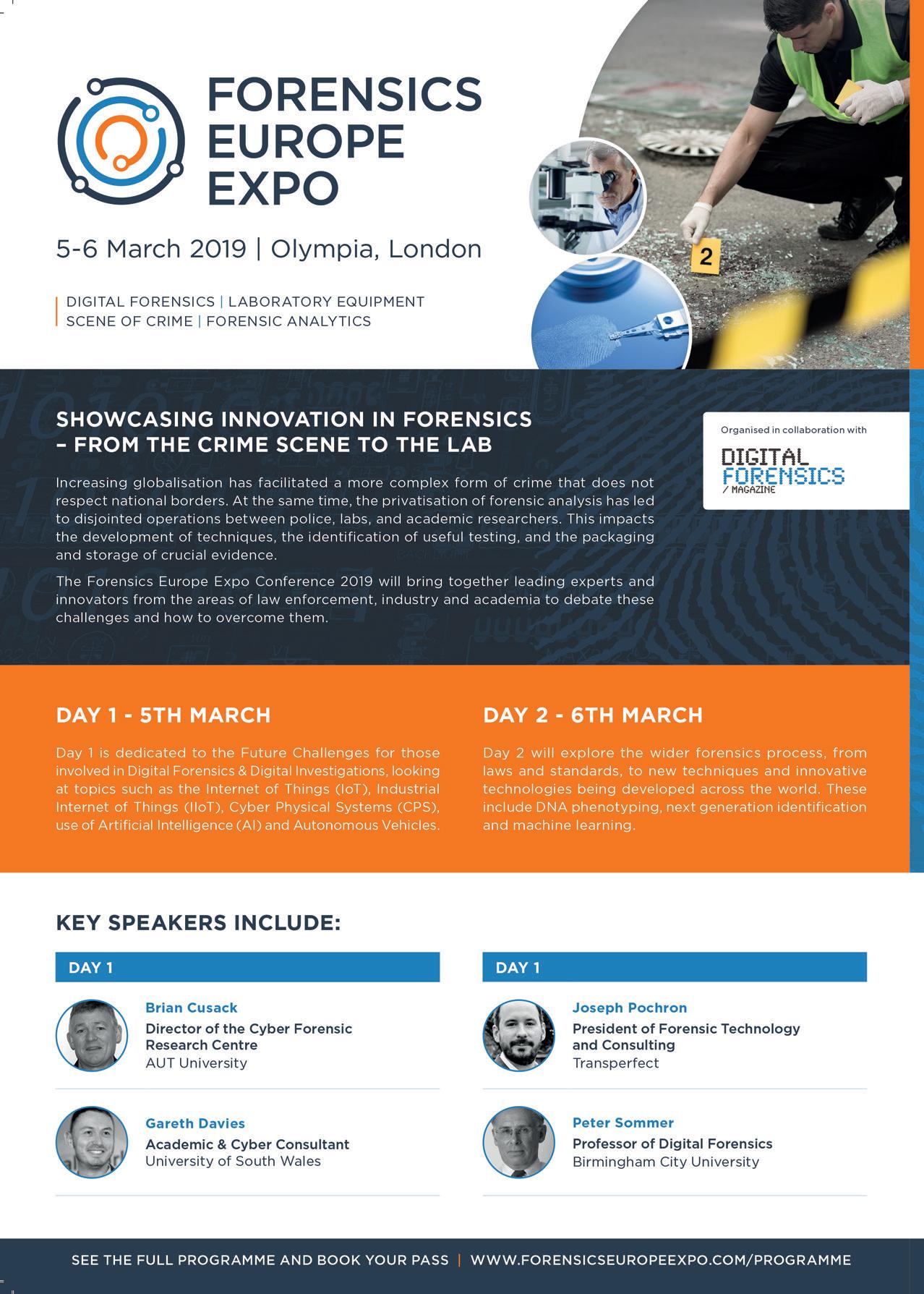

WeChat is one of the world’s most successful apps ever. As a digital forensics’ examiner, the chances are that you’ve heard of it and probably even worked with it. WeChat is so successful that it is often referred to as a “Super-App”.

This article will briefly provide some details about WeChat itself: the number of people who use WeChat globally; the reasons why WeChat is so popular in China and within Asian communities around the world; the features of WeChat itself; and the way in which data is encrypted and transmitted by WeChat.
We will then discuss the nature of the evidence itself and share some industry insights about who hires a private digital forensics expert to extract the evidence and why: common sources of evidence include: in-app communication, such as text messages, voice messages, images and videos; currency transactions; business transactions; gift exchanges designed to accommodate Asian cultural celebrations; examination of this evidence is frequently requested from members of the public and the legal community involving disputes such as: transactions and contractual obligations that have not been honoured; family law disputes; employment law (i.e., workplace) disputes; and criminal charges.
Finally, this article will discuss some of the challenges experienced by digital forensics examiners when extracting, analysing and reporting on matters involving WeChat evidence.
WeChat: Analysis of a Super-App WeChat is commonly referred to a “super-app”, but why? Most point to the sheer number of WeChat users worldwide, which is incredibly large. However, the esteemed label of superapp given to WeChat is most likely attribute to the number of WeChat users in combination with the many user-friendly features that WeChat offers. After all, it is highly unlikely that such a large number of people would continue to use an app that did not benefit them.
So, how many people use WeChat worldwide? It is commonly reported that WeChat has more than 1 Billion users Worldwide every month. That is an incredibly high number of people in terms of population for the planet Earth. At last count, the Earth was reported to have a population of approximately 7.7 Billion people. The fact that approximately 1 in every 8 people use a single app in any given month is staggering in and of itself. However, let us not forget that not every person on this planet uses a smart phone. In fact, a recent figure suggests that approximately 5 Billion people will use a smart phone globally by 2019. As these two figures continue their collision course, we can roughly expect that 1 in every 5 people in the world who own a smart phone will be using WeChat. Those figures certainly qualify WeChat as a super-app in our opinion.
Why does WeChat have so many users and why are they predominantly Asian, particularly of Chinese origin? In order to answer this question, we must briefly consider the legal and political landscape of China. China is subject to the rule of a regime under which the free flow of information, particularly online, is very strictly controlled.
Tyler Hatch examines the rise of the Super-App.With such features available and the number of users that enjoy all the benefits of WeChat, it is no surprise that the app has been given the highly appropriate label of a Super-App.
Within the context of such an environment, it was almost inevitable that technology such as WeChat, which predominantly serves to allow individuals and groups to privately and securely communicate by digital means, would explode in popularity. Security is achieved through encrypting the data while it is in transmission. However, we would note that WeChat communications are somewhat unique in that all data is encrypted and sent to servers, located in China, and then on to the end user. This intermediate interception or collection of data is not common in other communication apps such as Facebook Messenger, Whatsapp or iMessage for example, that send encrypted data directly between users.
Once people began to use WeChat, word of its utility spread and the developer’s responded by adding features and WeChat has only increased exponentially in popularity over the

course of its relatively brief existence. Users communicate with one another, or within WeChat groups of users, by sending text messages to one another, including various emojis and stickers that are popular and enjoyable features of such communications. Users are also able to exchange voice messages by making a recording and sending it to a friend or contact within WeChat. Digital images and videos may be sent as well.
As WeChat has developed over time, it has added features to allow users to perform business transactions and transfers of currency to one another. Many businesses accept payment through WeChat, such as taxi services and food providers. A special business account must be set up to accept business payments and WeChat restricts business account users to businesses that are officially registered in China.
You might be able to use your forensic software suite to extract WeChat evidence. It depends on which suite is your favourite. Not all forensic software suites will easily accommodate an extraction and readable report that is friendly to the end user.
Therefore, digital forensic examiners must exercise caution and do some research into the most appropriate forensic software suite to use and the limits of their existing tools when working with WeChat evidence.
Additionally, the landscape of this equation is constantly changing as the developers of WeChat update the versions of the app to add more features and ensure the app cannot be compromised by cybercriminals. Forensic software developers merely react to the changes made to apps like WeChat if and when they are made.
Transfers of currency from personal users to personal users are not restricted by geographical location within WeChat. This has given rise to one of WeChat’s most popular features which allows users to send a traditional Chinese New Year monetary gift in the form of a digital red “money packet” sticker.
With such features available and the number of users that enjoy all the benefits of WeChat, it is no surprise that the app has been given the label of super-app.
As we have outlined, WeChat evidence can be a useful resource for examining communications and exchange of information and currency between users. This evidence may often be used to corroborate or call into question someone’s version of events within the context of a criminal prosecution or civil litigation dispute.
DFI Forensics Inc. (dfiforensics.ca/)
is a private digital forensics firm located in Vancouver, British Columbia, Canada. We do not represent the Government of Canada, nor the Province of British Columbia in criminal or quasicriminal matters. Therefore, when we are hired by members of the legal community, it is most often for a civil litigation dispute or to assist in the examination of evidence to aid in the defence of a person charged with a criminal offence.
Most often, these civil litigation matters involve employment (i.e., workplace) legal disputes or family law disputes in which litigants are asking the Court to determine issues of division of family assets and/or issues of custody and access to children of the family relationship.
There is a large Asian community in Vancouver, B.C., and during the course of a high net-worth family law proceeding, many of them engage the services of Lorne MacLean, Q.C., founder and owner of MacLean Law (macleanfamilylaw.ca/). Mr. MacLean has often relied on WeChat evidence in his cases, including within the context of a 2018, 40-day civil trial in the Supreme Court of British Columbia.
Mr. MacLean recognizes that “WeChat is the number one social media and communication tool for [his firms’] Mandarin and Cantonese speaking clientele. All of standard warnings for inappropriate social media postings and electronic and digital communication apply to WeChat.” Specifically, he advises his clients to “not post social media content or send text WeChat messages they wouldn’t be proud to have a Judge see because believe me in your family case they will!”
This is a testament to the use and value of digital communications, such as those sent between WeChat users, to prove various aspects of a case when a civil dispute finds its way inside a Courtroom.
Anyone who has worked with WeChat evidence will know that it is generally fairly routine to extract from the source. However, there can be challenges processing and reporting the evidence to our clients in a user-friendly manner. The challenges you experience, and the solutions are often dependent on the choice of forensic software. Not all platforms and suites are equal when working with WeChat evidence in particular.
Often times, the challenge is that the forensic software suite you are working with is not compatible with the latest version of WeChat that the users are producing the evidence on. This leads to difficulties in viewing the messages in sequence with stickers, videos and images that were also exchanged in the same communication string. Some platforms will not extract the images at all, while some will extract them out of sequence.
The problem in working in this fashion is that a greater reliance in placed on the awareness of the forensic examiner working on the file. Unless the examiner is very clear about the context of the communication and the context within which the stickers, images and videos were exchanged, there may be an error in presenting them to the client or the Court unless great care is taken.
Some users of WeChat may be surprised to learn that their communication data undergoes an unusual transmission pattern not commonly seen amongst communication apps like WeChat. While many apps of this nature transmit data directly between user devices, WeChat data makes a stop in the middle.
Although WeChat data is encrypted during transit, it is sent from one user to a WeChat data collection and storage facility in China and then from that facility to the user who receives the data.
WeChat maintains that this is for the benefit of its users and the data is stored for a brief period in the event that a user needs to recover it from their WeChat account. While that explanation is plausible, one wonders if the expense of such a facility that collects and stores, even briefly, the data from so many users is consistent with WeChat’s explanation for its practice.
This has led some to call the practice into question and even suggested that the data is being used by the Chinese Government to surreptitiously spy on the private communications of its citizens.
WeChat evidence can be a useful resource for examining communications and exchange of information and currency between users. This evidence can often be used to corroborate or call into question someone’s version of events within the context of a criminal prosecution or civil litigation dispute.
To compound the problem, the evidence is often in Cantonese or Mandarin and, unless the examiner is fluent in the language of the communication between the WeChat users, there may be a greater likelihood that human error may result.
One of the forensic software tools that is highly capable of dealing with WeChat evidence is the Belkasoft Evidence Centre (belkasoft.com/ec). It supports extraction and analysis of WeChat history from Android and iOS devices.

• Android WeChat history is stored in the encrypted SQLite database EnMicroMsg.db (com.tencent.mm\MicroMsg\*\ EnMicroMsg.db).
This database is encrypted using sqlcipher plugin (https://www.zetetic.net/sqlcipher/ sqlcipher-for-android/)
• iOS WeChat history is stored in the SQLite database MM.sqlite (AppDomaincom.tencent.xin\Documents\4 e091c49a4148702c235801ee48c4694\DB\ MM.sqlite).
This database is usually unencrypted.
The tool looks for encrypted Android WeChat databases and asks for user input when such a database is found. It is able to decrypt Android WeChat, using device IMEI and user UIN provided. If UIN was found and extracted from a data source, it will be displayed on the “WeChat decryption options” dialog window (Figure 1).

In Android devices, messages are extracted from the “message” table and contacts are extracted from the “rcontact” table. In iOS devices, messages are extracted from tables starting with “Chat_” and contacts are extracted from the Friend table. The following sequence of images are an illustration of how the evidence may appear within the tool (Figure 2).
A digital forensics examiner can filter through acquired messages using a number of criteria, illustrated in Figure 3.
A digital forensics examiner may also search for evidence among all data sources and artefact types, as illustrated in Figure 4
A digital forensics examiner can bookmark important data, as illustrated in Figure 5.
Finally, a digital forensics examiner may create a clean, user-friendly report in a variety of common formats and file extensions, as illustrated in Figure 6.
 Figure 3
Figure 2
Figure 3
Figure 2
Summary
WeChat is a remarkably successful app as best evidenced by the high number of users Worldwide. The app has risen to its popular status due, in part, to the socio-politico context that existed in China at the time it was developed, but also due to its many user-friendly features that make it irresistible to the many users who enjoy its capabilities daily.
With so many users generating so much communication, it is no wonder that WeChat evidence is useful to authorities and civil litigation lawyers who wish to use it to establish communication between parties to disputes, witnesses and suspects charged with a crime.
Accordingly, the digital forensic examiner has a very likelihood of working with WeChat evidence in the future if they have not already had the opportunity. This article highlighted some of the challenges posed to the digital forensic examiner in working with WeChat and what can be done to ensure the best and most efficient results for the clients that depend on the final result.
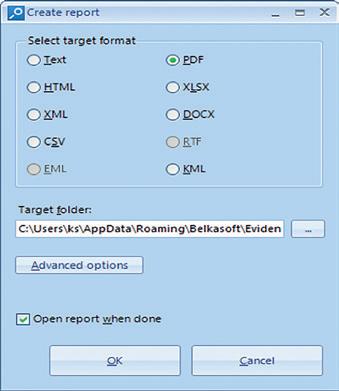
For best results, it will be important to make a note of the latest version of WeChat available at the time of your investigation and whether the device you are examining has the latest version installed. Next, it will be important to know or research whether your forensic software can work with the evidence produced in the version of WeChat you are working with. The variables are always changing so ensure you are reviewing these factors every time for best results. •


REFERENCES
https://www.statista.com/statistics/255778/ number-of-active-wechat-messenger-accounts/ http://www.worldometers.info/world-population/ https://www.statista.com/statistics/330695/ number-of-smartphone-users-worldwide/
Tyler Hatch is a former litigation lawyer whose passion for using the best available evidence to prove facts led him into digital forensics. Tyler is the Founder & CEO of DFI Forensics Inc. (dfiforensics.ca), a digital forensics and cybercrime/data breach investigations firm based in Vancouver, B.C., Canada.
 Figure 4
Figure 5
Figure 6
Figure 4
Figure 5
Figure 6
Unless the examiner is very clear about the context of the communication and the context within which the stickers, images and videos were exchanged, there may be an error in presenting them to the client or the Court unless great care is taken.

NA is well established as the gold standard when it comes to crime solving. Linking the tiniest shreds of DNA evidence together, forensic investigators are able to provide reliable proof that ties an offender to a crime or exonerates an individual who has been wrongly accused. Praised by appellate court decisions and successfully used by both the prosecution and the defence, DNA testing has come to be regarded as the bread-and-butter of forensic investigation, with the ability to reliably produce the right result.
DNA, however, is not without its challenges and its limitations. Poor-quality samples or partial profiles containing degraded DNA for example, may make it difficult to identify the donor of the DNA. So too can complex DNA mixtures containing genetic data from more than two individuals, especially if any of the individuals are related.
Recent lab closures at DFS (District of Colombia), Austin (Texas), and reviews more broadly in Texas and at Broward County (Florida) have highlighted the interpretation of complex DNA profiles. There were no issues raised with the technology of profiling, only with the statistic applied.


The human factor, of course, is always a consideration when it comes to deciphering and interpreting challenging DNA samples. No matter how good the science, mislabelling DNA samples, misinterpreting test results, or
accidentally transferring cellular material or DNA from one sample to another may all lead to false reports of a DNA match. Accredited forensic laboratories are aware of and take pains to safeguard against this risk.
Finally, several newspaper articles and even books such as Erin Murphy’s 2015 tome, ‘Inside the Cell: The Dark Side of Forensic DNA’, have argued that DNA tests are not now, nor have they ever been, completely error-free, given the state of our judicial system. Murphy contends, “You can’t take even a perfect science and put it into the dysfunction that is our criminal justice system and expect everything to come out okay.”
While it’s hard to disagree entirely with that assessment, it is fair to say that it emphasizes the rare, but often highly publicized exceptions to good science. The bottom line is that while DNA testing has its occasional shortcomings, it is overwhelmingly reliable. And that reliability has only been enhanced by the relatively recent introduction of sophisticated forensic software packages capable of analysing even the most complex DNA.
Forensic DNA software has greatly improved the ability to interpret low-level, degraded, or mixed DNA samples with a significantly higher degree of accuracy than previously possible. While these sophisticated software packages differ somewhat from each other, each was developed to use more information in the DNA profile information that previously was discarded.
Deoxyribonucleic Acid (DNA) is a molecule composed of two chains that coil around each other to form a double helix carrying the genetic instructions used in the growth, development, functioning, and reproduction of all known living organisms and many viruses.

(Source: Wikipedia)


Doing so improves interpretation, particularly with regard to complex DNA mixtures that previously were thought to be unresolvable. STRmix, for example, uses a scientific understanding of the behaviour of biology to develop millions of conceptual profiles within the software. It then grades the profiles on how closely they resemble the observed mixed DNA profile. Successful conceptual profiles are examined to identify the individual DNA profiles that best describe the observed mixed DNA profile. Each of these individual DNA profiles may then be compared to a suspect’s DNA profile in order to calculate the strength of the evidence when compared to these profiles.












This approach enables users to interpret DNA results faster and more accurately. Data from DNA tests may be uploaded and run through an array of probability models, using more of the information in a DNA profile than ever before possible. Data will be compared to profiles against a person of interest in order to calculate a likelihood ratio, weighed against coincidence, and ultimately used to resolve previously unresolvable and highly complex DNA mixtures.






To date, sophisticated forensic software has been used in literally thousands of cases around the world. In a recent Michigan court case, for example, sophisticated forensic software was used to provide important evidence in an armed robbery case,



























The human factor is always a consideration when it comes to deciphering and interpreting challenging DNA samples.
interpreting the profile obtained from sweat inside a sneaker left behind at the scene of the crime. Forensic software’s ability to obtain reliable evidence from microscopic or muddled traces of DNA has also proven to be highly effective in cracking cold cases, reprocessing evidence that was originally dismissed as inconclusive.
Perhaps not surprisingly, given previous complaints about forensic DNA testing, some attorneys, members of the media, and others are already voicing concerns that DNA software is simply too new to be able to rely on the results it produces in criminal cases. Pointing to the Daubert or Frye-Mack Standards, prosecutors and defence attorneys alike have charged that forensic software fails to meets the general acceptance test. They also raise questions about whether forensic software has been validated independently and if it has been subject to peer review.
To date, the courts generally have rejected such claims. Two 2017 Michigan cases (Michigan V. Marlon Anthony Burns and Michigan v. Larry David Smith) ruled that one such sophisticated forensic DNA software, STRmix™, satisfies all Daubert considerations, i.e., it has been subjected to rigorous testing, validated subject to peer review, and is generally accepted in the scientific community, as well as federal and state courts.
Similarly, the court ruled in Minnesota v. Johnny Earl Edwards that the same software is generally accepted in the relevant scientific community and, therefore, admissible in Minnesota courtrooms, while a U.S. District Court judge in New Mexico determined in U.S. v. Melvin Russell that STRmix™ “has been tested for the purpose relevant here, that such tests have been peer-reviewed and published in scientific journals, and that its analyses are based on calculations recognized as reliable in the field.”
While it is true that sophisticated DNA software has been in use for less than a decade, even its detractors have been forced to acknowledge that it is based on standard mathematics in use for decades. The probability models and Markov Chain Monte Carlo (MCMC) methods employed by forensic software actually were born in Los Alamos, NM during World War II then brought closer to statistical practicality by the work of Hastings in the 1970s. Widely used outside of forensic science, MCMC is being employed in everything from computational biology and weather prediction to physics, engineering, and the stock market. As a result, the only thing truly new about this software is its combination of these two methodologies.
What about those who question peer review and independent validation? One question repeatedly asked in court hearings has been whether the software has been scrutinized by other professionals in the field and independently validated. The answer to both questions is a resounding yes. Numerous scientific papers about sophisticated DNA software have been published in peer-reviewed scientific journals.
Beyond that, the International Society for Forensic Genetics published guidelines for validating software in 2016, while the Scientific Working Group on DNA Analysis Methods (SWGDAM) has produced guidelines for validating probabilistic genotyping tools. The Organization of Scientific Area Committees (DNA Analysis 2 Sub-Committee) is also working on standards for assessing probabilistic genotyping software tools.

Some attorneys and reporters have also charged that because the algorithms used in forensic software are proprietary and, as a result, sometimes secret, they essentially are dealing with a black box situation. The data is entered, a solution comes out, but there is no explanation or understanding of what happens in between. There is also no opportunity for the functioning of the software to be properly reviewed and challenged.








In statistics, Markov chain Monte Carlo (MCMC) methods comprise a class of algorithms for sampling from a probability distribution. By constructing a Markov chain that has the desired distribution as its equilibrium distribution, one can obtain a sample of the desired distribution by observing the chain after a number of steps. The more steps there are, the more closely the distribution of the sample matches the actual desired distribution.
(Source: Wikipedia)














































The International Society for Forensic Genetics (ISFG). The society aims to promote scientific knowledge in the field of genetic markers as applied to forensic science. This is mainly being achieved through regular meetings of either regional or international nature, their journal Forensic Science International: Genetics and the work of their expert DNA commissions.
(Source: Adapted from the ISFG Website)
The Scientific Working Group on DNA Analysis Methods, known as SWGDAM, serves as a forum to discuss, share, and evaluate forensic biology methods, protocols, training, and research to enhance forensic biology services as well as provide recommendations to the FBI Director on quality assurance standards for forensic DNA analysis
(Source: Adapted from the ISFG Website)
Another potential issue cited by some detractors is the fact that miscodes occasionally have been found in forensic software.
That characterization, however, doesn’t apply across the board. Making code available, in fact, varies widely from product to product. Some forensic software solutions, such as TrueAllele, have successfully defended applications to disclose source code on numerous occasions. As the technology has become more widely used, though, other software options have been more open about making their codes public. STRmix, for example, makes its source code available under a non-disclosure agreement. In addition, all of its algorithms have been published in the scientific literature and are freely available. Other DNA software solutions, such as LRmix Studio, are open source, making codes and algorithms readily available for other users to explore and improve.



To a large extent, the courts have been divided on this issue. In ‘People v. Chubbs’, a cold murder case in California dating from the 1970s, the trial court determined that Chubbs was entitled to examine the source code under protective order. That decision was overturned on appeal in 2015, however, with the court ruling that Chubbs’ stated reasons to access the source code, even under protective order, did not outweigh trade secret protections.
Similarly, the court in ‘Washington v. Emanuel Fair’, a Seattle homicide case, ruled in January 2017 that it was “not persuaded that a review of the source code is necessary to determine

whether TrueAllele [the forensic DNA software used in the case] is reliable … Testimony in this case from both state and defense experts establishes that scientists can confirm the reliability of TrueAllele without access to the source code.”






In New York, however, a federal judge unsealed the source code for the same software program in ‘U.S. v. Johnson’ after the investigative journalism organization ProPublica filed a motion arguing that there was a public interest in the code.
Perhaps the most important consideration here is that regardless of specific policies with respect to secrecy, it is not a good idea to make it possible for people to install and use such powerful software without proper training. As a result, many software developers insist that users take part in a training workshop to ensure not only that they understand how the software works, but also that they are able to correctly represent the results it generates in court.
Yet another potential issue cited by some detractors is the fact that miscodes occasionally have been found in forensic software. While the existence of disclosed miscodes understandably leads to questioning on the part of legal counsel, the bottom line here is that no software of any complexity is free of miscodes. It is important to point out, however, that the miscodes that have materialized in sophisticated DNA software typically occur on the edges of normal usage and to date, have had no substantial effect on the statistic given. There is always some untested circumstance, either some aspect never envisaged or some rare set of circumstances that may result in identification of a miscode. So, while a 100% guarantee that the software is error free probably doesn’t exist, it is possible to guarantee that normal usage has been extensively tested.
There are certainly other questions that have been raised, and will continue to be raised, with respect to forensic software. It’s the nature of anything new that is introduced into the courts. The bottom line, though, is that DNA evidence remains one of the most effective tools available in modern law enforcement. And while the future is likely to see even more advances, the increasing acceptance and use of sophisticated forensic software will undoubtedly have a profound impact on improving prosecution rates, increasing case clearance rates, acting as a deterrent, and otherwise playing a key role in systematic crime reduction. •
John Buckleton is a noted forensic scientist who has worked extensively in the DNA field as a member of New Zealand’s Institute of Environmental Science and Research Limited (ESR). Dr. Buckleton is one of the developers of STRmix™, a sophisticated forensic software used to resolve mixed DNA profiles previously considered too complex to interpret.


Bernard Parsons summarises the Top 5 issues that small businesses should think about if they are looking at adopting, or undertaking wider rollouts of, disk encryption.
Organisations must look for products that are easy to use, easy and quick to install. An obvious requirement that is partly about reducing the time and expertise required to install products in the first place. But an important subsequent point is also total cost of ownership. If a product is not easy to install, it is usually a good indicator that actually there is a level of complexity that will remain as a long-term business overhead. The more complex a product is, the more complexity there is to manage, leading to higher levels of required expertise and the more potential for support issues to occur over time, driving up the product’s total cost of ownership for the organisation.
1 2
Encryption can be a businesscritical asset, as well as a business-enabling technology. It’s therefore important that you're working with an organisation, whether that's a vendor or the vendor’s partner, that can offer good, and accessible technical support to you. Even if you get the first point right i.e., you're choosing a product that's easy to use, that's going to reduce the amount of required technical support, you should still think about the potential for requiring support over the total life of the product. In a couple of years, you may be looking at doing something slightly differently, such as looking at encrypting new devices that may be non-standard (such as RAID Servers)
and want to ensure that you can pick up a phone and talk to someone with sufficient expertise. The option of phone-based support is important; being able to jump onto a call in a reasonable amount of time and actually talk to an expert. Therefore, we'd certainly recommend testing this process with a vendor or the partner before you go ahead and procure.
It's a good first step to encrypt laptops, as organisations will always lose laptops. Encryption turns what would potentially be an informationloss, into just the loss of a physical asset, protecting the organisation’s information and addressing the organisation's liabilities. However, under regulation such as GDPR, there is often a requirement to prove that devices actually were encrypted in the event of a loss, in order to avoid some of the reporting requirements within these regulations. Proving that a device loss is not an information loss and avoiding the need to undertake breach notification, is something you want to be able to think about in advance. If you're deploying a product that includes centralised management, that functionality should already be there. But many small businesses will choose to deploy in a more standalone configuration, without the need to stand up a central management platform. With standalone installs, you should still ensure that that product has a reporting capability of some kind, such as online, allowing the encryption status of your estate of devices to be reported.
4
In the first instance, you may be looking at deploying encryption within an estate of Windows devices. But it could be the case within a year or two that you have other requirements; you might need to manage encryption on Mac devices, or on smartphones and mobile devices within that same suite of products. Therefore, it’s a good idea to look for vendors that have multi-platform offerings, helping to future-proof your technology choice. This will ensure that you’re not tied to a vendor, but at least ensuring that your existing vendor is an option as your requirements grow.
5
3 FEATURE ENTRY Digital Forensics Magazine 46
relevant for encryption products. One of these is the US standard, Federal Information Processing Standard (FIPS), which ensures that algorithms have been correctly implemented. However, organisations must be wary of adopting technology just because it has a FIPS certification. The majority of products use the same algorithms, such as Advanced Encryption Standard (AES); FIPS ensures that a third-party has validated that the vendor has correctly implemented the algorithm.
This is similar to having a locksmith check the quality of your house locks, confirming that they are of good standards. However, they are not going to mention anything about whether you frequently leave all the windows open every time you leave. FIPS will tell you that the algorithms have been implemented correctly, but vendors can, and still do, implement products inappropriately that leave vulnerabilities.
Recent research from Radboud University in The Netherlands has highlighted vulnerabilities in not just one vendor, but a whole range of vendors’ SSDs. The fundamental reason they highlight, is that actually implementing encryption well is not easy, and it is easy to make mistakes. Vendors can take shortcuts, which means that security researchers can then find resulting vulnerabilities; in this case they were able to bypass the encryption within SSDs.
Organisations are better off looking for certification schemes that are more comprehensive. One example is the Commercial Product Assurance (CPA) scheme, run by the UK National Cyber Security Centre (NCSC). CPA works alongside FIPS for validating algorithms, but it says more about the overall product quality and implementation, looking at the security architecture to make sure that it has been designed and implemented in a sensible way.

It also looks at the vendor coding and build standards, thereby reducing the risk of there being a vulnerability in the product. The risk is never fully mitigated, but it certainly goes down to a point that allows you to say that, as an organisation, you are adopting best practice.
Alongside security and liabilities, organisations also to be concerned about the cost of being caught out by products with publicised vulnerabilities. Subsequently, they also need to think about the cost of then changing to a different solution.

In summary, these are the five things that we would suggest organisations, particularly SMEs, want to think about as they adopt encryption. It's not rocket science and most good vendors, or their partners should be able to easily walk you through these steps. •
Encryption is the process of using an algorithm to transform information to make it unreadable for unauthorized users. This cryptographic method protects sensitive data such as credit card numbers by encoding and transforming information into unreadable cipher text. This encoded data may only be decrypted or made readable with a key. Symmetric-key and asymmetrickey are the two primary types of encryption. Encryption is essential for ensured and trusted delivery of sensitive information.
Symmetric-key encryption uses two secret, often identical keys or codes for computers involved in message transmission. Each secret key's data packet is self-encrypted. The first symmetric encryption algorithm is the Data Encryption Standard (DES), which uses a 56-bit key and is not considered attack-proof. The Advanced Encryption Standard (AES) is considered more reliable because it uses a 128-bit, a 192-bit or a 256-bit key.
Asymmetric-key encryption, also known as public-key encryption, uses private and public keys in tandem. The public key is shared with computers attempting to communicate securely with the user’s computer. This key, handles encryption, rendering the message indecipherable in transit. The private matching key remains private on the user’s computer. It decrypts the message and makes it readable.
Bernard Parsons is the CEO and Co-Founder of Becrypt. Establishing Becrypt in 2001 with the aim of addressing the growing security requirements of endpoint technology, Bernard has built the company into a leading supplier of end-user device security products and services, with a focus on product assurance, multiple platform support and flexible delivery: from being embedded within the platform, to hosted within the Cloud. Furthermore, Bernard has ensured Becrypt helps the most securityconscious organisations to be positioned as leaders in enabling value from the use of secure technology. For his dedication to digital technology, Bernard was bestowed with an MBE in the 2018 New Year’s Honours List.
Encryption can be a business-critical asset, as well as a business-enabling technology.
Fancy winning a nifty little iPod Nano? Well, simply answer the question below, and you coud be in with a chance!


In our feature article by Brian Cusack, what does AR stand for?
A. Artificial Reality
B. Augmented Residence
C. Advanced Reality
D. Augmented Reality
To enter, all you need to do is send an email to: competition@digitalforensicsmagazine.com, writing ISSUE38COMP in the subject line, being sure to include your name, address and phone number with your entry.
This competition is open to anyone aged 18 or over, except for employees of TR Media Ltd and their immediate families. Only one entry is permitted per person. Entries can be submitted by email only to competition@digitalforensicsmagazine.com. TR Media shall not be responsible for technical errors in telecommunication networks, Internet access or otherwise, preventing entry to this competition. Closing date for all entries is on 1 April 2019 at 9.30am GMT. Any entries received after that time will not be included. The correct winning entry, chosen at random by the DFM team, will be notified by email on 1 May 2019. The winners may also be announced in Issue 38 of the magazine and on the Digital Forensics Magazine website. Submitting your entry constitutes your consent for us to use your name for editorial or publicity purposes, should you be one of the winners. TR Media Ltd reserves the right to change or withdraw the competition and/or prize at any time. By entering the competition, entrants are deemed to have accepted these terms and conditions.



International Standardisation for Digital Forensics has proceeded over the last eight years to produce a data set of inter-related agreements for the exchange of evidence. To many, the complexity of Standards, their numbering and obscure contents fail to make practical sense and confuse the entry points for effective use. A roadmap is provided in this paper for Standard information access and optimal use.



Digital evidence gathered through a traditional investigation, e.g. imaging a mobile device, is well understood. Nowadays, it is more likely that evidence will be gathered from multiple remote systems which are not under the control of the investigators. This article takes a look at two categories of remote evidence: social media, and the Dark Web. We will also examine two interesting cases: The Target store credit card breach; and the civil case of Fero v Excellus Health Plan, Inc.
The article will help readers understand how to approach a vehicle from a digital forensics perspective. It will cover a range of infotainment units from popular manufacturers, data extraction methods and examples of data types found which may be considered intelligence and or used as digital evidence.
This article looks at the use of Human Super Recognisers to identify suspects and link offenders to multiple crimes. Looking at what Super Recognisers are and how they are selected and given training to enhance their ability along with the type of database required to allow them to most effectively use their skill with tactics known as "face snapping" and "Domino". Several examples of successful cases are included, including the Salisbury Russian assassins.
After data collection and during Digital Forensics analysis, further elaboration is needed for the contextualization. Investigations with a high amount of heterogeneous data, represent a huge problem in the search of events connection, facts or to demonstrate alternative solutions.

Using data extracted from the Engine Control Unit (ECU) and the Integrated vehicle infotainment (IVI) gave us 153.9 miles of data from 19 different drivers. Using a non-simulated experiment, this article shows how near-real time detection may be achieved.
Note: We may change the planned content of future issues without notice; inclusion here does not guarantee publication in the subsequent issue.
Continuing our aim of bringing you new and interesting articles from the world of Digital Forensics, Issue 39 is shaping up to be another good mix of research and practical advice, here is just a taste of some of the articles being considered.
Cyber security is a rapidly evolving discipline which carries with it a series of challenges, many of which are unique and require continuous engagement between academia and industry. However, there are often criticisms on both sides, with academics complaining that industry does not talk to them and industry arguing that academics are focusing their energies within the confines of their ivory towers. So who is not talking to whom, and how can academia and industry work better together?
WMG is an academic department of the University of Warwick, pioneering in industry
sponsored research, and is one of the rare university departments which can genuinely claim to embed industry at the heart of academic education and research.
Very few academic institutions have the breadth, depth or calibre of industrial collaboration that has been a defining characteristic of WMG over the past 34 years. Within WMG, the Cyber Security and Management MSc has been designed with extensive industry consultation, and the course is delivered by tutors from the WMG Cyber Security Centre (CSC) who have considerable experience of determining and implementing
cyber security solutions in business – often at very senior levels in prestigious companies.
The CSC’s research areas of focus include cyber-physical systems, vehicle cyber security, smart cities, digital forensics, advanced network defence, and counterfeit protection. Its approach is a multi-disciplinary one, combining academics, government and industry experts from a variety of disciplines who bring together the technical and behavioural aspects needed for effective cyber security research.
It is vital for industry and academia to work together. WMG provides a template for how this collaboration can flourish. •
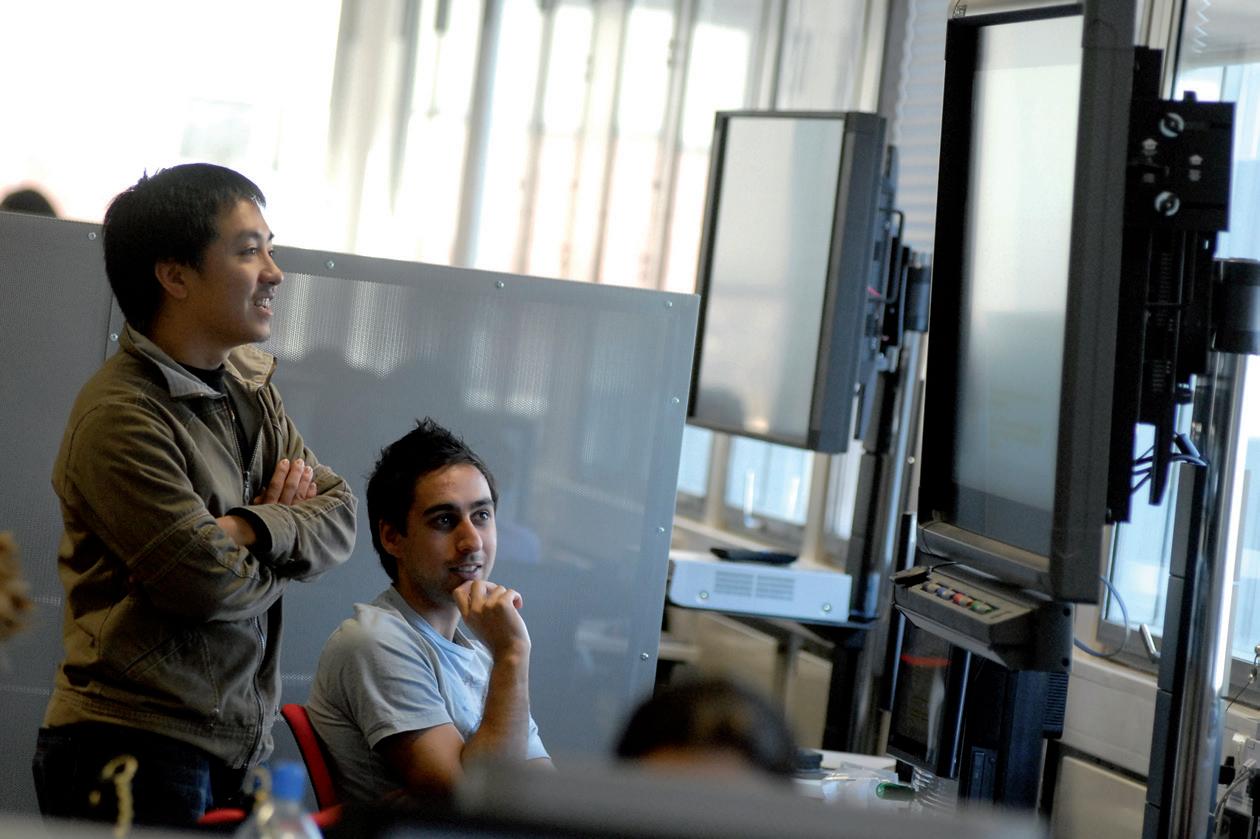
The course is delivered by tutors from the WMG Cyber Security Centre (CSC) who have considerable experience of determining and implementing cyber security solutions in business.

Digital Forensics Magazine prides itself on not just being a magazine, but also for being a source of quality, valuable, and useful information for the Digital Forensics Profession. Our goal is to bridge the gap between the academic journal and the traditional magazine. We want to hear from you on what is good or bad as well as what you would like us to include so please provide your comments to us via 360@digitalforensicsmagazine.com and if you want to get involved in one of the activities outlined we would welcome you to the growing band of professionals who contribute to the growth of the magazine.
Digital Forensics Magazine is always on the look out for new talent and content and as the number one magazine for all matters Digital Forensics we are looking to expand our list of contributors. If you feel that you have something to contribute to the magazine in one of the following categories, contact us via 360@digitalforensicsmagazine.com and join the ever-growing team of international contributors who are leading the discussions.
If you have an idea for an article, which you would like to discuss, or if you want to become a regular contributor, we want to hear from you. The field of Digital Forensics is vast and with the ever-increasing use of technology in so many aspects of daily life, not previously envisaged, the need for the Digital Forensic investigator to go beyond the hard disk and the mobile phone requires new tools and techniques. If you are involved in Digital Forensics or related research, developing new tools to solve a particular problem (especially new technology), a learning experience from a case study or just want to share your ideas and thoughts we would like to hear from you. It does not matter if you have not written before; we will work with you to craft your idea into a publishable article



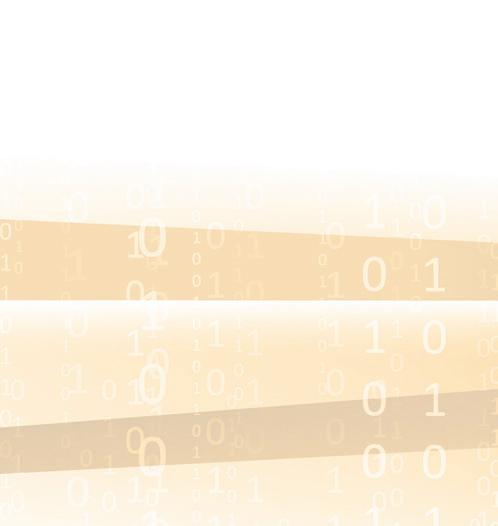

using our team of experienced authors and editors. If this is you then email us at 360@digitalforensicsmagazine.com or submit your article idea via the website www.digitalforensicsmagazine.com
In future issues we will be tackling issues such as wearable technology, prosthetics, forensics of the DarkNet, analysis of operating systems, analysing the unusual tablets, cloud forensics, real time operating system forensics, modern game console analysis, along with training and certification; so if you have an idea for an article; get Involved and contact Digital Forensics Magazine.
As we see the increasing and innovative use of technology, the need to secure and investigate said technology is increasing. As a result we see an increasing number of books being published that require review and comment. Working with the leading publishers Digital Forensics Magazine obtains these books to allow us to review and comment on. These reviews are then covered in the magazine and carried on the DFM Blog. Once selected you will be sent a list of books available for review, you then choose a title that you like and we will send you the book. You read the book and then fill out a review form to be sent back to DFM. If you would like to become a book reviewer for Digital Forensics Magazine contact us at 360@digitalforensicsmagazine.com with a CV to demonstrate that you have the required knowledge and experience to be a book reviewer.
Digital Forensics Magazine regularly carries articles on various supporting investigative technologies and we have a number of companies that have asked us if we would consider reviewing their products. This is not a rubber stamping exercise, this is an in-depth review looking at aspects such as
ease of installation, ease of use, information gained, usefulness of the product, supporting documentation etc. To become a product reviewer you will need to be a suitably qualified Digital Forensics Investigator who has knowledge of the disciplines in which the technology operates. Send your CV to 360@digitalforensicsmagazine.com and tell us why you believe you have the credentials to become a product reviewer.
The Digital Forensics Magazine blog is an outlet for news, commentary, ideas and even the occasional rant. We are looking for Digital Forensic researchers, investigators or even those with just an interest in the subject to join our growing band of regular contributors to the blog site to provide interesting and stimulating content. The content can be wacky as well as serious, however it must be related in some way to Digital Forensics and will be checked and edited prior to publication. If you would like to become a regular contributor to the Digital Forensics Magazine blog then contact us at 360@digitalforensicsmagazine.com
Digital Forensics Magazine is a global magazine printed in English and distributed in the UK and USA, and to over 40 countries, including many in Southern Africa, South America, Australasia and Europe. The cost of promotion to such a large audience in all of these geographical areas is beyond the budgets of the magazine, so we are on the look out for evangelists; those people who believe passionately about Digital Forensics and are active in their own communities. DFM Evangelists receive discount vouchers to pass onto their communities as well as having direct access to the marketing team at DFM who will help them promote Digital Forensics related conferences, events and activities in their region. If you are interested in becoming a Digital Forensics Magazine Evangelist contact us at 360@digitalforensicsmagazine.com
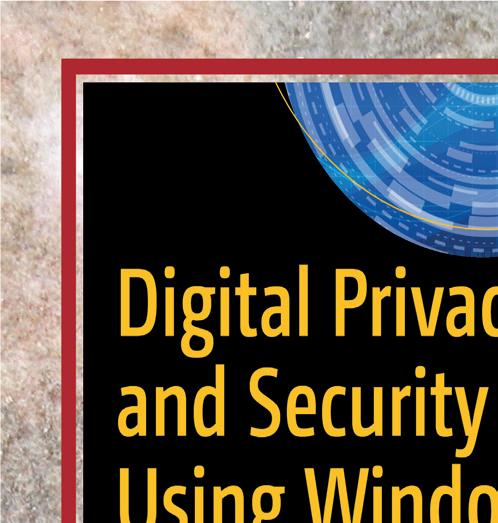










The following is Part 1 of a 2-part story of the first hacker to be imprisoned in Uruguay. Told in his own words it is but one side of the story and has been published by DFM purely as a human-interest story and we make no judgement either on the Author or the Uruguay Criminal Justice System who are welcome to provide their side of the story should they so wish. Regardless of whether or not you believe the author, he does raise some important issues with regard to Digital Evidence and Procedures. It also serves as a warning to all security professionals of how good intentions might be misinterpreted.
My name is Alberto, I am the first Information Security Professional (The media gave me the title of 'Hacker') that was sent to prison in Uruguay and I would like to change how computer crimes are investigated in my country. This is the first of two articles related to my case. I spent 8 months behind bars and as I am writing this article, I am home as an appeals court allowed me to get out of prison on bail. This article is not focused on my experience in prison, but it is about the investigation, the collection of evidence in my house and to identify all the points where I had the chance to see that they were not following best practice in digital forensics. It also tells a context of this story, which was never mentioned in the press release of the police. These and other elements, make this case appear much different than it was described by the police.

The story began years before the unexpected arrest, so let’s begin from the day I believe my incarceration began or was triggered.
Let’s go back to 2014. It was a Saturday afternoon, I was with my girlfriend, and she told me she needed to go online to her medical provider's website to try to make an appointment. When I reached the login form of the medical institution, the form had an annoying captcha, and I started looking at the code, and all I had to do to get rid of that control was delete a parameter in the URL of the login form, and bingo!
The next step, should it work, would probably take me too much time and It would not be worth the effort to spend more than five minutes there. It was just some “stupid” test, I do whenever I am in front of a login page, so I began, first try…. User: admin Password: admin and I was inside the system. Game over, that was probably very serious, so I decide to report the problem to the CERTuy of Uruguay. It was not the first time I had reported a security problem to the CERTuy of my Country. (Figure 2)
Apparently, they also considered the incident serious, as it was a Saturday and I got an email back in about two hours directly from the Director of the CERTuy. I never would have thought that reporting that event would be the initial step of a series of actions that would conclude with 8 months in prison. I normally do not regret anything I do. When I do something is because I think it is the best thing I can do in the moment and by not doing something, you are also deciding; but I must admit that while writing these lines, I do regret reporting that problem. It was not the only one. (Figure 2)
The next year, I visited again the web site and, started looking at the source code of the pages and after a few minutes I was able to access to all kind of information without needing a username and password, just playing with the parameters in certain URLs. That lack of controls in the system looked very serious, so I immediately sent another email reporting that to the CERTuy. (Figure 3)
I can clearly see a series of “mistakes” that I made to end up in Jail. I refer them as “mistakes”, but they were just actions’ I took in order to protect the medical information of hundreds of thousands of people. Of course,
‘Responsible Disclosure’ is what you do when you want to help to solve a problem, trying not to cause any problem with the system that is affected. An article recently published in Germany regarding my story, was entitled “Thanks to "responsible disclosure" in the jail”; “You could end up being "Alberto" from Uruguay, ...”


I am taken to the Interpol facilities in Montevideo. They asked me if I know why I was taken there, and I said no. They told me the name of the health institution and I felt a great relief, as I was aware of everything and I had helped with the security of that place. Well I was interrogated for about 1 or 2 hours and I was being honest in all my answers, even when one of the guys was a little bit aggressive, something I could not understand. The final question was whether I had sent an email (or more than one) asking to be paid in Bitcoins to not disclose all the medical records of the health institution. That took me by surprise and of course I said I did not.
Okay, from that point on, I was confused, I did not know what my situation was, I wish I had a lawyer with me. At one point they told me they have a record from my ISP showing that

This article is not focused on my experience in prison, but it is about the investigation, the collection of evidence in my house and to identify all the points where I had the chance to see that they were not following best practice in digital forensics.Figure 2
the email was sent from an IP that was assigned to me when the mail was sent. I knew that was not possible, but that was the beginning of my worst nightmare.
After being almost 24 hours away from my house, spending all my time in a cell or being interrogated by people that were somehow funny, as one of them, when I was asked about where I got my bitcoins, and I was mentioning localbitcoins.com, yelled and me and told me not to lie anymore, he told me he had known bitcoins for more than 10 years. Of course, I was not going to tell him that the at that date, the bitcoins were 8 years old.

I am not violent, and I had enough with that person from Interpol when he offered his help to make me remember some encoded URLs. I was not told that my lawyer could be with me during the interrogation. Nobody told me that they had to identify themselves If the person being investigated asked them. It was right after the offer to help me remember everything that I asked his name. Yeah, the “offer to help me remember” was not trying to analyze logs or any other information with me, I took it as an “offer to try to stimulate my brain with tools such as… his fist” in order to make me remember, I did anything they wanted to remember I did, whether I did them or not. That happened on a Saturday, where I slept on the floor of a cell. I was freezing. Apart from thinking there is not much you can do in a situation like that. So, I started to think.


On Sunday at 11:45 they took me to my house to execute the search warrant of “electronic media”. Well these guys were not prepared to see what they were going to see in my house. It was probably the first time they went to the house of a person who is a technology freak and has all the devices you can imagine. They started to put things in boxes, they were asking me “what is this?” every 5 minutes. I was handcuffed sitting in my sofa. I could not see what they were doing. Then they found the cards. I was calm, but they were convinced I was a cyber terrorist, when they found more than 100 blank magnetic cards, and a writer/ reader for them. They were sure I was cloning credit cards. I did not want to talk because I had told them the truth in everything and all I got were screams and insults, and threats to tell the truth. One of them picked up his cell and phoned somebody else.
Yes, I had almost 150 blank magnetic cards, a reader and a writer, but never were they were going to find a cloned credit card. At about 13:00 another agent arrived at my house and he was there to psychologically play with me. He just wouldn’t stop taking and telling me that I should confess everything or, they would go to my mother’s house and destroy it like they were doing with my house and they would also do the same with the house of my girlfriend at that time.
When for some reason the police goes to your house and finds 125 blank magnetic cards and a writer and reader of cards (a device to clone credit cards in their vocabulary), and you are an information security professional, they just do not have the preparation to understand the part that "you are a security professional" and they just treat you with disrespect as if you are a cyber terrorist. That is sad. A year after, guess how many of those 125 cards were recorded with stolen credit cards information?
Figure 4 Figure 5Apparently, they also considered the incident serious, as it was a Saturday and I got an email back in about two hours directly from the Director of the CERTuy.
ZERO, 0, none of them. Of course, if their pride is the way it is, that would never appear in the press, for the records, the guy was a criminal committing credit card fraud. Of course, they also mentioned in the press releases that they found an "anonymous mask", which, for those people, is the clearest evidence of dealing with a cyber terrorist.
I knew that they had no elements to link me with the mail they talked to me about the night before. My mother’s health was very bad, and my girlfriend didn’t deserve to live something like what I was living. Again, I was so innocent to thing that as there was no link between the email and me, and I knew they were bluffing or just incompetent, and if we add my lack of knowledge of legal issues, and my will to end that as soon as possible, made me take the decision to tell the agent that I did send the email. That was a stupid move. The most stupid move I could have taken. Willing to end that as soon as possible, I had just buried myself and I was not going to return to my house for 8 months. At 13:30 my girlfriend arrived, after the guy had been there almost 2 hours that are not registered (well, almost), and they took me to court, and she stayed at my house. Well, they forgot this piece of paper with the record of the time (11:45) at my house.
(Figure 4)
I have some experience in computer forensics. I worked in the first case after the law against production of child pornography was created in Uruguay in 2004. Some things
they did in my house were not aligned with the way I would collect digital evidence. I had a Samsung Galaxy S7 that was off and charging and one of the agents came and turned it on and asked me for the pin. An Ultrabook Lenovo was on, standing by, with the screen closed, and they unplugged it and took it. They were using medical gloves. They took some, yes some, of the hard disks that were in my house, but they did not use any antistatic bags to store them. The registry of things they took is really, funny and useless. Not giving any guarantees in terms of integrity of the information stored in the equipment’s they took. I am glad that for the media, they took and published some high-resolution pictures that gave me an idea of the things they took. But anyway, there are still differences between the registry they created in my house, the pictures, and the information they gave to the press. So basically, it’s been a year, and I still do not know exactly what they took. They mention “several hard disk drives” in the record… That is completely useless if they intend to analyze its contents. Everywhere information is stored, I expect a hash or other signature of the data stored, otherwise there is no way for me to know if something was modified during the inspection of the contents of the media.
(Figure 5)
According to the press release of the police, they seized 6 laptops, 5 cell phones, a reader/ writer of magnetic cards, a reader/writer of hard disk drives, a router, 13 hard disk drives,
125 magnetic cards, 1 POS, 16 pendrives, 2 color printers and a paper trimmer. They also seized 1460 US dollars, 8320 Euros, 157 Reais (money from Brazil), and 3180 Uruguayan pesos.
After 8 months, when I was released from prison and I returned to my house, I could not believe I found 29 hard disk drives in my house as well as 3 computers and 3 cell phones, just to mention some elements that had failed to be seized by the police. I also found money, and many magnetic cards, just to mention other objects that they had failed to take.
The press release of the police included many pictures in high definition, which really helped me to identify what they had taken from my house. But elements such as the printers and paper trimmer do not appear in the pictures nor in the record of the procedure. They are just mentioned in the press release and obviously they were not in my house when I returned. {Figure 6)
You can see collection bitcoins, an LED torch, an Iomega zip drive, a 4-port USB hub, many ledger wallets of cryptocurrencies, and a great amount of USB devices such as two USB killer, a USB rubber ducky, and a LAN turtle just to mention a few of them.


Well as I mentioned, I found in my house 29 hard disk drives when I was released from prison, along with memory cards, pendrives, magnetic cards, money, hundreds of DVDs and CDs, and all the power adaptors of all the notebooks, except the one of the Mac.
Here are just some problems that I noticed in the procedure of collecting digital evidence:
• Lack of appropriate knowledge to identify most of the devices. They took 1 router, and left 4, including the ASUS one I used for Internet access. A Pineapple Wi-Fi, 2 USB card readers, 1 SQUARE card reader for cell phones. An many other devices that I prefer not to mention, but that due to their obvious lack of knowledge in the field, had no clue of what they were.
• Lack of documentation of the procedure while they were in my house. The only record created while they were in my house is in the image below. Includes the serial number of laptops, but then it lacks relevant information when it comes to other devices such as cell phones and other equipment is described in a very poor and useless way such as “many hard disk drives”, “several chips”. I assume they refer to sim cars
from operators in Uruguay, Argentina, Paraguay and Chile, they I had bought while traveling there, and in particular those from Argentina, I keep charging money on them every month in order not to lose them, as I had to go to Argentina on a regular basis and getting a sim cad, activating it, etc., takes time, the Traffic of Internet Access you get is very low, so I got a sim card with certain features, and I pay a monthly fee to keep it. I had to travel to Argentina last December 3, invited by the Czech Embassy for a Workshop about “Forensics Investigations by MobilEdit” and in just one day, I spent 700 USD in data roaming with my provider from Uruguay.
• In the pictures the ledger wallet boxes can be seen, there were seized models HW.1, Nano, and Nano S. In the record, they wrote “Ledger HW1”.
• They seized credit and debit cards with my name. Many of the debit cards were issued by the company named WaveCrest in Gibraltar, and they had hundreds of dollars credited into them. That company announced that in January 2018 the cards were going to become useless, so I lost all the money charged in the cards.

• Lack of care to handle the devices found.
• The search warrant clearly states that the scope of the seizure is “electronic media”. They did not comply with that as A HUGE NUMBER of elements outside that category were taken. No only that, but in the search warrant, my name is not correct, the date to execute it is wrong, and the scope was not respected at all.
• I cannot find an answer to the fact of having left almost 30 Hard Disk Drives in my house. That makes me consider things that I will not express in this article, because those things have nothing to do with a proper procedure of digital evidence collection.
Those are problems during the process, but the saddest part of all is that it’s been more than a year since that, and no analysis has been performed, when my lawyer, the judge and the prosecutor are constantly requesting the examination of the evidence. My lawyer told me off the record that they said that most of the equipment were not going to be analyzed as they did not have the resources to do it.
But the most important thing from the way evidence was “collected”, is that it doesn’t really matter whether they take it a month or 2 years or 5 to perform any analysis. The point is that the Justice, cannot understand, or do not want to understand that under no circumstances, the results of any analysis would be considered as legally admissible evidence as no chain of custody can be assured in those conditions, and not to mention contamination of the evidence during the process. So, it is just a waste of time and money, in this case, for me to wait. If they return me my equipment in 6 months, it would be obsolete, they took from my house what in that moment was the latest technology available. They would return me something that will be worth nothing for me as I wouldn’t be able to work with those equipment’s.
An the most unbelievable thing of all this, is that in order to make the process progress, I decided to tell my lawyer that I was willing to provide all information required, such as PIN codes for hardware-encrypted pendrives, crypto currency hardware wallets, user names and passwords, and any credential needed in order to have access to the contents of any device or system of my property, stored in the seized equipment or remotely, to make their research easier and allow them see anything I had, giving them access to the contents that could only be accessed with the correct PIN, such as the crypto currency wallets, where there is no known attack vector in order to access to them without the PIN, and after entering a wrong PIN 3 times, the contents of them is deleted. The prosecutor did not want me to supply that, and that is something I cannot still understand. •
Alberto Daniel Hill is a computer engineer with more than 20 years of experience linked to Information Security (Consulting, IT security, Computer Forensics, Ethical Hacking, Information Security). He worked in many large companies in Uruguay and provided services for companies in other countries. In 2017, he specialised in the norms ISO/IEC-27000, also on Ethical Hacking and approved several courses related to a wide range of IT Security fields such as computer forensics, as well as an ISO/IEC-20000 specialisation. He is PMP-certified and has lead many Information Security projects since 2011. He has the Cybersecurity Fundamentals Certificate (CSX) from ISACA, organisation that awarded him with a PLATINIUM membership recognition. The CSX certification in Cybersecurity demonstrates knowledge aligned with the National Institute of Standards and Technology (NIST), National Initiative for Cybersecurity Education (NICE), which is compatible with global cybersecurity issues, activities and job roles. He has been part of the team of volunteers of the chapter OWASP Uruguay since 2012.
Follow him on twitter: @ADanielHill LinkedIn: https://www.linkedin.com/in/nofear75/ Support his CHANGE.ORG petition to the way computer crimes and digital evidence are handled in Uruguay. www.change.org/p/poder-legislativogarantias-en-tratamiento-de-evidencia-digital-ydelitos-informaticos-en-uruguay

The saddest part of all is that it’s been more than a year since that, and no analysis has been performed, when my lawyer, the judge and the prosecutor are constantly requesting the examination of the evidence.























DFMag has continued to grow throughout 2018, with ever increasing partnerships worldwide planned for 2019. DFMag has been continuously busy with sponsoring a growing number of international events, with many being held in numerous parts of Europe. There has also been an increasing number of sponsored events further afield, in the USA and the Middle East, as well as various other locations around the world, such as Thailand. If you are interested in either getting your event sponsored by us or sharing your event details via our various social media channels, then please do get in touch with us. DFMag is also supporting and exhibiting at the Forensics Europe Expo on the 5th-6th March 2019, in London. Visit our stand to talk to the team.


We get regular feedback from our readers and are keen to maintain the dialogue, so if you have anything you would like to comment or share please do not hesitate to drop us a line at 360@digitalforensicsmagazine.com
We also get readers who want to share noteworthy news about what they are doing, we encourage this so do please get in touch! Last quarter we received several communications for library level subscriptions which are available. Further to this, we are always on the lookout for new authors including articles from University students. As stated
before, we are committed to helping those who will shape the future of our industry in addition to those who are defining it now. We do still get the occasional email about “you need to be logged in to view the magazine”. As mentioned in the past, this is a common issue that results from some of the security features that browsers are now implementing. Please follow the instructions below to ensure ease of access to the magazine:
We welcome the additional security features being included by the browser developers, however it does require you to be proactive in managing your browsing experience, rather than just accepting everything that the web throws at you.

If you do receive this error, one of the following is the likely reason for you having done so:
1. You are not logged in via the Digital Forensics Magazine Website with a valid subscription.
2. You are logged in via the Digital Forensics Magazine Website with a valid subscription but have some security settings that are blocking access to the subscription checker.
If you believe that you have a valid subscription, are logged in and are still receiving the error, then you need to do the following:
1. Whitelist the Digital Forensics Magazine website with all of your security plugins.

2. Whitelist the ZMags eReader website with all of your security plugins.

3. Allow cookies for both the Digital Forensics Magazine and ZMags websites.
4. Ensure that NoScript or NotScript are disabled for both the Digital Forensics Magazine and ZMags websites.





5. Restart your browser once you have enabled the websites through your security to flush the caches.

This should resolve your access issues, however if after following the above you are still having issues, please do raise a support ticket and our support staff will respond and help you resolve your issue.
At present we have a Facebook group, which is by invitation only. Candidly we have not had a lot of requests via this channel yet and we are looking to ramp this up. The goal is to have only those specifically in the industry as Facebook members. If you would like to be invited to this group, please send us a request first via email to 360@digitalforensicsmagazine.com with the subject line “Facebook invitation request.” Please do send it from a work email address or ensure that you provide your affiliation and designation within the industry.

We are regularly tweeting tools, tips and news articles from our blog along with the best retweets, from our followers, which have now increased to over 11,834 — an increase of 314 since our last issue! We are also part of several various cyber security and digital forensics lists, which increases our reach far past this number. You can find us on @DFMag and we welcome comments and dialogue as well as DM’s. We also retweet relevant postings from our followers. As practitioners, we know that in the process of doing the day job, finding the time to develop the odd script or a quick problem solver is difficult. Therefore, we do look out for various relevant tools, techniques or journal papers that can help and share them. Just a reminder that if you need support please use the support ticket system; we are not able to respond to or review your support query via twitter as quickly.


The DFM LinkedIn



Group is maintaining its steady growth and has over 3,140 unique members. Just search for “digitalforensicsmagazine” and send us a request to add you. As it is a private group, it is a good place to make new connections and share thoughts and ideas. We are still working to ensure moderation of this list and restrict automated postings. As mentioned before, we are happy to create sub-groups

for discussions and postings related to such topics as education, mobile device forensics, network forensics, cloud forensics etc. If you would like to be part of a group, then just drop us a line at 360@digitalforensicsmagazine.com In the last quarter, we had several postings and we encourage our members to keep it up. These articles range from in-depth technical malware analysis to tips and techniques from the latest digital forensics tools.



The blog readership and traffic is growing with visitors from all over the world. Postings here include topics covering E-Discovery, digital forensics and the latest news on cybercrime, hacks and breaches that make the headlines and some interesting ones that do not! If you would like to become a regular contributor to the blog, please drop me a line via news@digitalforenicsmagazine.com
Our dedicated Support Ticketing System available via the DFM website is where users can raise a trouble ticket if they are having issues logging in or problems viewing the online version of the magazine, or just want to point out anything related to our website.
If you think you can contribute in any way to the magazine or to any of the discussions taking place via social media, please make sure that you join the groups and follow us as appropriate or just send an email to myself Safia Hallaq at safiahallaq@digitalforensicsmagazine.com
If you are interested in either getting your event sponsored by us or sharing your event details, then please do get in touch with us.
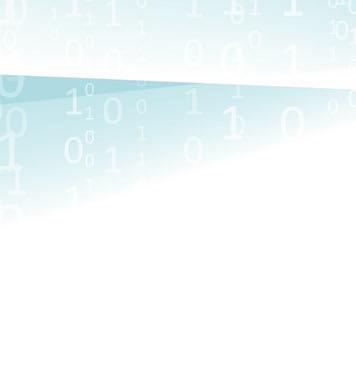


The last few months have been pretty hectic to put it mildly. Firstly, a new experience, giving evidence to the House of Lords Science & Technology committee inquiry into Forensic Science. I ruffled a few feathers by pointing out that the Research Excellence Framework (REF) is very, very broken and will return false data about Forensic Science research & researchers unless they do something to fix it. It's particularly true because many universities have deliberately created a two-tier system where a lot of staff are on "teaching only" contracts to avoid having to return them for REF. As a result, anyone whose research is largely applied or not well-supported by research funding will be excluded from REF returns. Since REF is supposed to identify centres of excellence, some very good researchers and research won't even be counted, let alone rated and, once again, the research councils will believe that there is very little forensic science research going on. My own view is that the research funders need to start including forensic applications in part of their assessment criteria. Two simple questions should cover it: 1) Could the results of the project have any application in investigations and the criminal justice system? should be asked on all bid applications and 2) Do your results have any application in investigations and the criminal justice system? should be answered in all final reports. Simply asking the questions would make all applicants think about the issue and help to identify any "accidentally useful" methods.
If you get a chance, and have a few hours to spare, it's worth going to the Inquiry web site and listening to the evidence (https:// www.parliament.uk/forensic-science-lordsinquiry). There are some common threads running through most of it and the committee's frustration seems to become more apparent.


More importantly, perhaps, in between churning out report after report about encrypted mobile phones, I was asked to do some work on TOR browser. It started out as a simple explanation of how TOR works and how it masks the identity of the client machine for browsing. I even went as far as doing some simple animations to help the court understand it. However, when I got to court it got really interesting. It turns out that the suspect in question had been accessing .onion sites, those lovely little hidden sites that can't even be found without using TOR. One of them had been taken over by a law-enforcement agency who had planted an exploit which resulted in them being able to obtain the real IP address of everyone accessing it. Naturally, the agency was reticent about explaining exactly how they'd done this and refused to give any detail in their statements, but we did manage to persuade them to drop some hints about how many transactions were involved, and which direction they went in (suspect to trusted host and vice-versa). With that information, and the bug reports for the underlying browser, and the broad hints in the agencies initial statement I was able to make some informed guesses about exactly what they were doing and produce my own report describing the most likely method in a
bit more detail. Naturally, it was all couched in terms that made it clear that I was speculating and drawing inferences from incomplete information, but after the defendant's own expert had reviewed my theorising, the plea was changed to guilty.
Sometimes, in spite of the ever-present impostor syndrome, it's nice to know that other people not only understand what I'm saying but might even agree with it. •
Angus Marshall is an independent digital forensics practitioner, author and researcher, currently working on the ‘fitness for purpose’ challenge. In a past life he was an academic course leader in Digital Forensics and Forensic Computing and still retains strong links with academia, professional bodies and regulators. He can be contacted through his company, n-gate ltd. (http://www.n-gate.net).
 Peeling Onions.
Peeling Onions.
Since REF is supposed to identify centres of excellence, some very good researchers and research won't even be counted, let alone rated.







